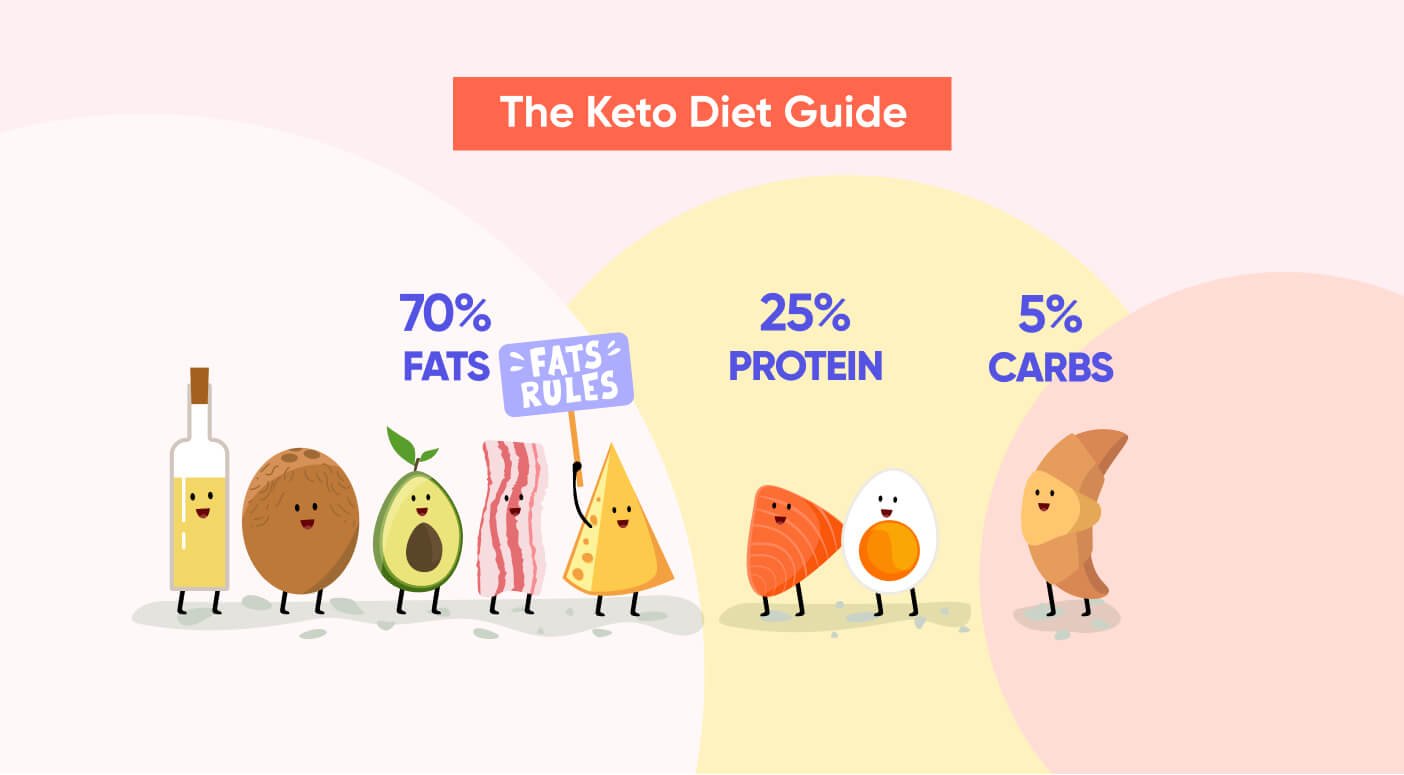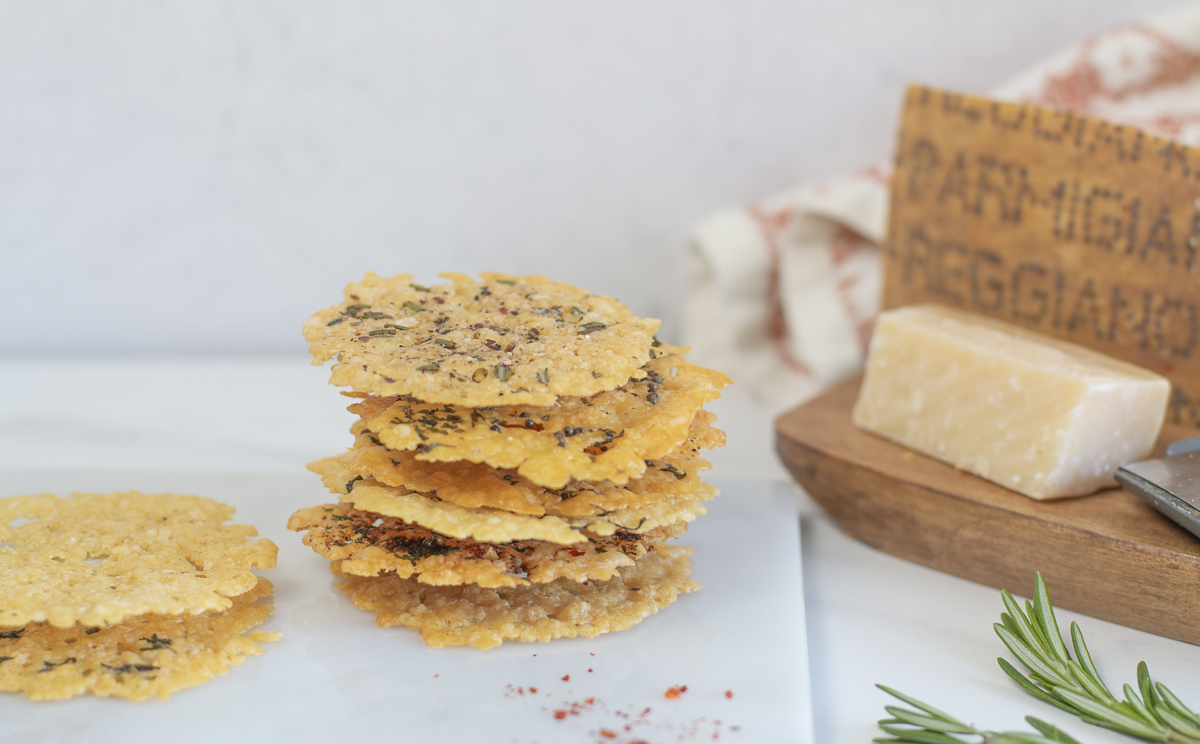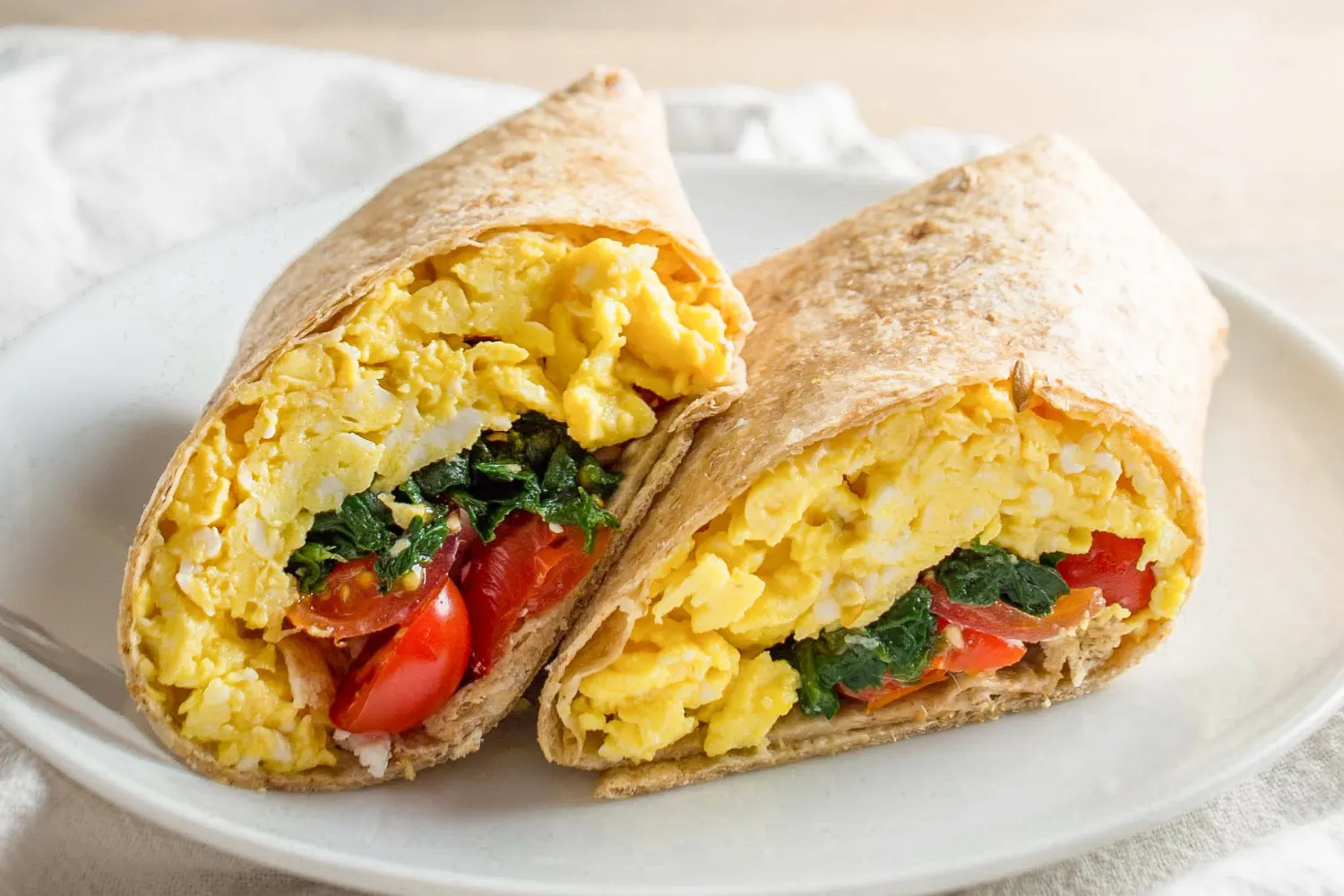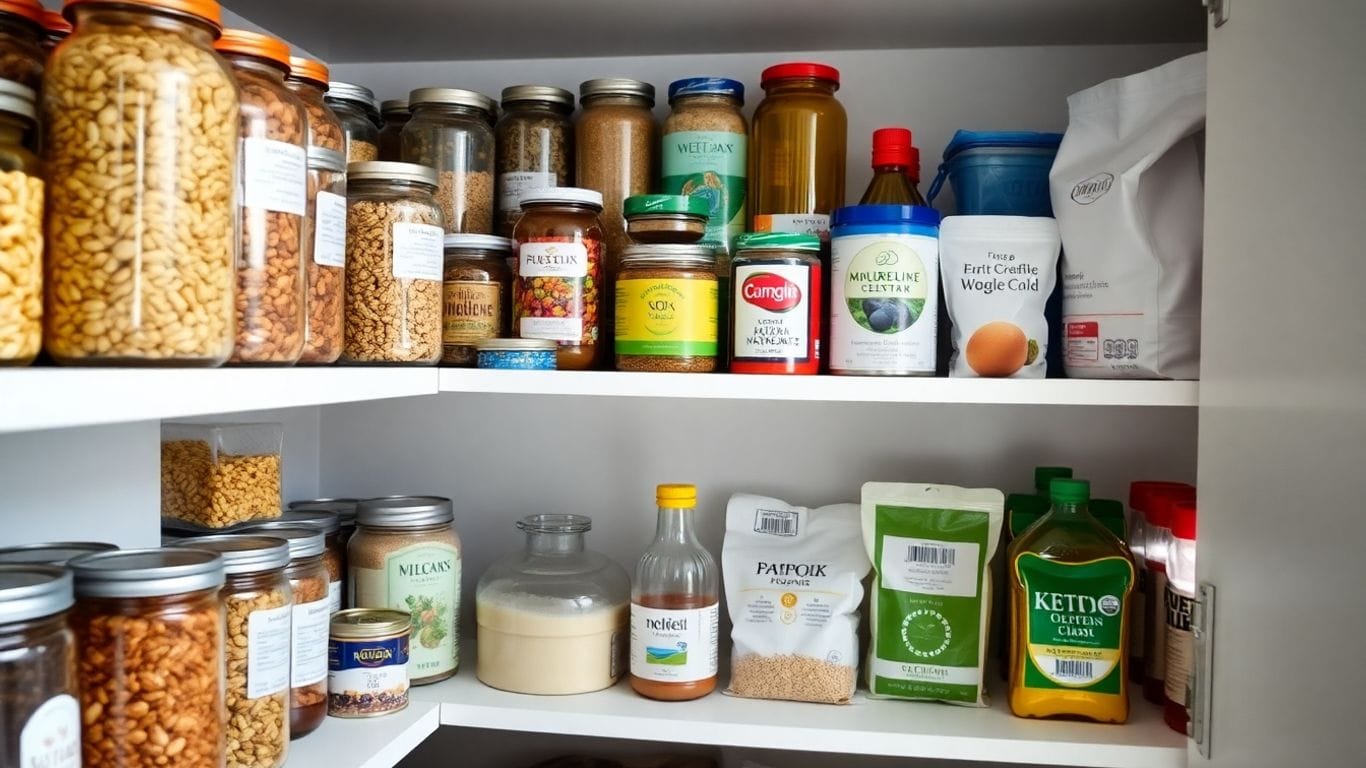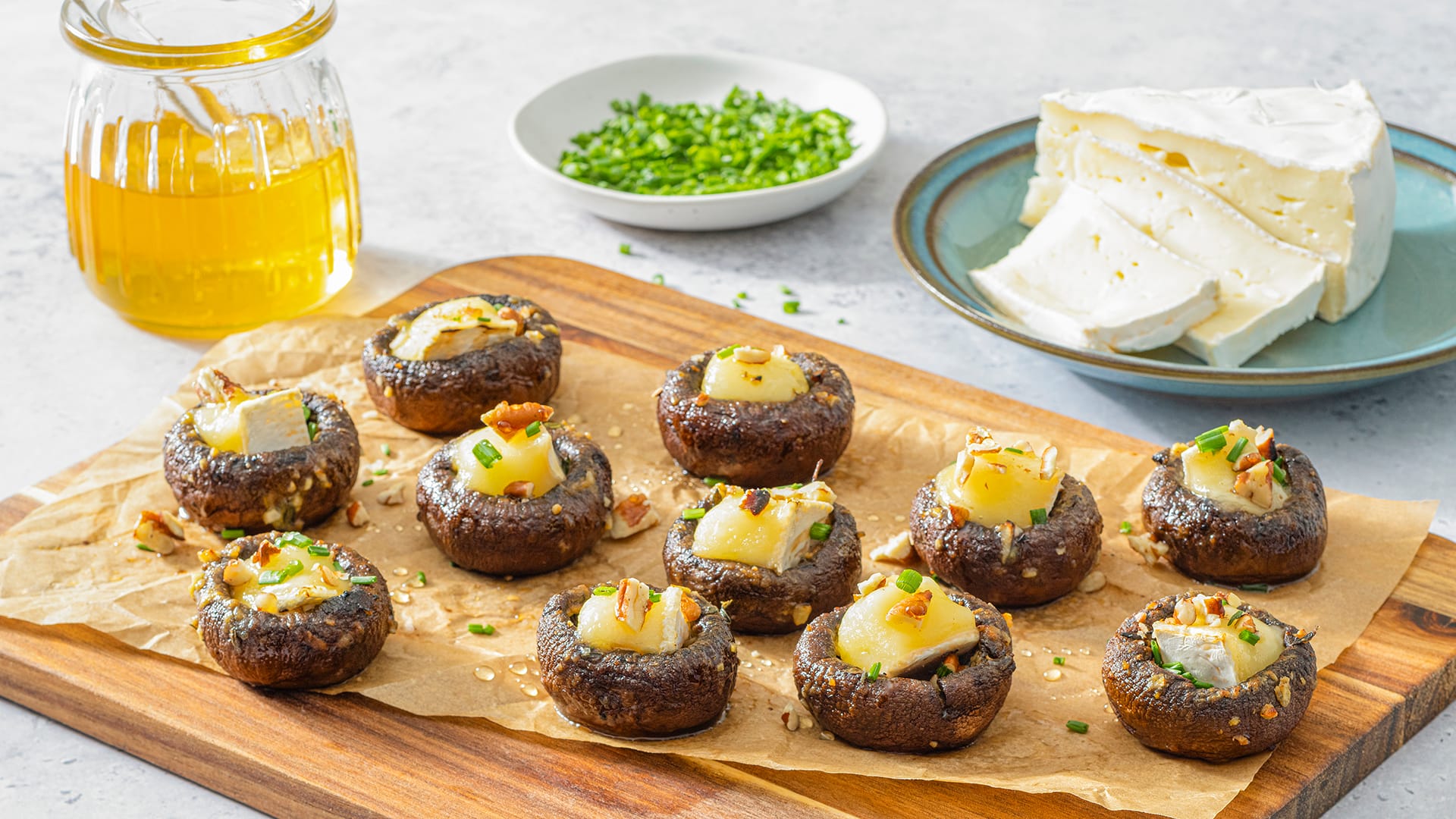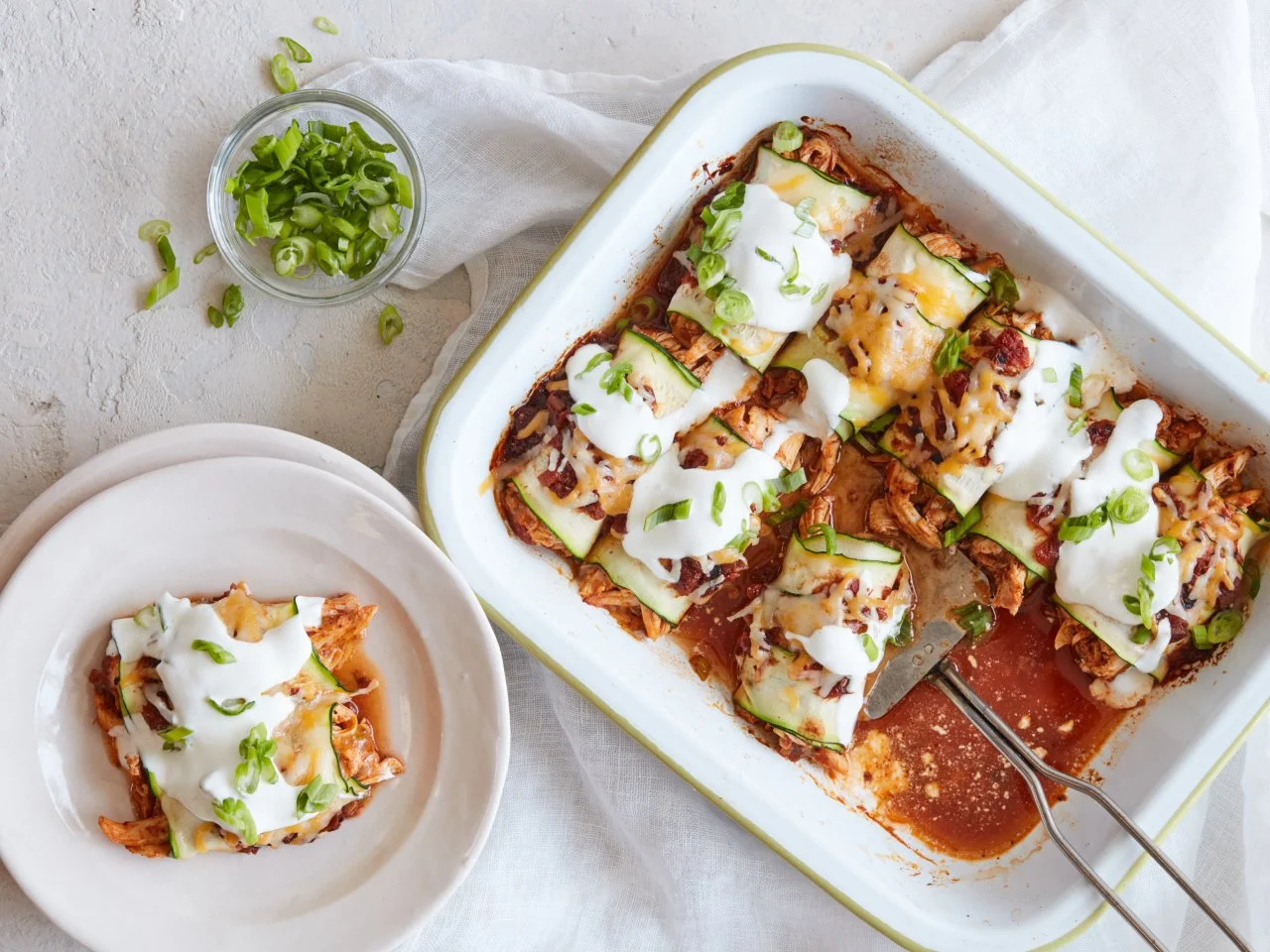Thinking about trying out a ketogenic eating plan? It’s a popular way to eat for weight loss and other health perks, but it can seem a bit confusing at first. This guide is here to break down the keto diet, give you a sample keto menu, a keto shopping list, and some easy keto tips for beginners. We’ll cover everything from understanding keto macros to finding tasty keto recipes, making this low carb diet feel totally doable.
Key Takeaways
- The ketogenic diet focuses on very low carbs, moderate protein, and high fat intake to shift your body into ketosis, using fat for energy.
- A beginner keto plan involves preparing your kitchen, creating a keto food list, and understanding which foods to eat and avoid.
- Planning a keto weekly menu and utilizing time-saving strategies like batch cooking can make sticking to a ketogenic lifestyle much easier.
- A well-planned keto shopping list prioritizes whole foods like proteins, healthy fats, and non-starchy vegetables.
- Managing the ‘keto flu’ with hydration and electrolytes is important during the initial adaptation phase of the keto diet.
- Incorporating a variety of keto recipes and keto meal ideas helps keep the ketogenic eating plan interesting and sustainable.
- Understanding keto macros and net carbs is key to effectively tracking your intake and achieving your goals on a weight loss diet.
- Consulting with a healthcare provider before starting any new diet, including the ketogenic diet, is always recommended.
Understanding The Ketogenic Diet Basics
So, you’re curious about the ketogenic diet, huh? It’s a way of eating that’s gained a lot of attention, mostly for its potential to help with weight loss and blood sugar management. Basically, it’s a diet that’s really low in carbohydrates, moderate in protein, and high in fat. The idea is to shift your body’s primary fuel source from glucose (which comes from carbs) to ketones (which are made from fat). This state is called ketosis.
A ketogenic diet plan is a structured approach to eating that significantly cuts down on carbohydrate intake. Instead, the focus shifts to consuming more fats and a moderate amount of protein. This dietary change encourages your body to enter a metabolic state known as ketosis, where it becomes efficient at burning fat for energy.
This eating style can be beneficial for individuals looking to manage their weight, improve blood sugar control, or explore potential health benefits associated with a low-carb lifestyle. However, it’s not for everyone. People with certain medical conditions, like kidney or liver disease, or those who are pregnant or breastfeeding, should avoid it. Always chat with your doctor before making big changes to your diet.
The core principle of a keto diet is to drastically reduce carbohydrate consumption, typically to under 20-50 grams of net carbs per day. Net carbs are total carbohydrates minus fiber. The rest of your daily calories come from fats (around 70-75%) and protein (around 15-20%). This macronutrient distribution is what helps induce and maintain ketosis.
Getting the balance right is key on keto. Here’s a general idea of the macronutrient split:
| Macronutrient | Percentage of Daily Calories |
|---|---|
| Carbohydrates | 5-10% |
| Protein | 15-20% |
| Fat | 70-75% |
Ketosis is the metabolic state your body enters when it doesn’t have enough glucose from carbohydrates for energy. Instead, it starts breaking down stored fat into molecules called ketones, which then become the primary fuel source. This process can lead to increased fat burning and may contribute to weight loss. It’s a natural process, but it requires a significant reduction in carbs to achieve.
People often turn to keto for several reasons. It can be effective for weight loss because it helps suppress appetite and increases satiety. Some studies also suggest benefits for blood sugar regulation, which can be helpful for those managing conditions like type 2 diabetes. Many also report increased mental clarity and energy levels once they adapt to the diet.
While keto can offer benefits, it’s not without potential downsides. Some people experience the
Getting Started With Your Ketogenic Meal Plan

Starting a ketogenic diet might seem a bit daunting at first, but with a little preparation, you’ll be well on your way. Think of it like getting ready for a big trip – you wouldn’t just hop on a plane without packing, right? The same applies here. Getting your kitchen in order and knowing what foods to grab at the store makes a huge difference. It’s all about setting yourself up for success from day one.
Before you even think about recipes, let’s talk about your kitchen. A little decluttering can go a long way. Go through your pantry and fridge. If you have a bunch of high-carb items that you know you won’t be eating, it might be best to pack them away or give them to a friend. Having tempting treats staring you down isn’t helpful when you’re trying to stick to a new plan.
- Clear out the high-carb culprits: Think bread, pasta, sugary cereals, and snacks.
- Make space for keto-friendly staples: You’ll want room for things like avocados, nuts, seeds, and healthy oils.
- Organize your essentials: Keep your go-to keto ingredients easily accessible.
Creating A Keto Food List
This is where the real planning begins. A solid food list is your roadmap to the grocery store. It helps you avoid impulse buys and ensures you have everything you need for your meals.
Here’s a basic breakdown to get you started:
| Category | Examples |
|---|---|
| Proteins | Beef, chicken, fish, eggs, tofu |
| Vegetables | Spinach, broccoli, cauliflower, bell peppers |
| Healthy Fats | Olive oil, avocado oil, butter, nuts, seeds |
| Dairy | Cheese, heavy cream, plain Greek yogurt |
| Pantry | Spices, unsweetened almond milk, low-carb flours |
Foods To Eat On A Keto Diet Plan
So, what can you eat? Plenty! The focus is on whole, unprocessed foods. Think delicious proteins, non-starchy vegetables, and healthy fats.
- Meats and Poultry: All types are generally fine.
- Seafood: Fish and shellfish are great choices.
- Eggs: A versatile staple.
- Non-Starchy Vegetables: Load up on leafy greens, cruciferous veggies, and others like cucumbers and zucchini.
- Healthy Fats: Olive oil, coconut oil, avocado, nuts, and seeds.
- Full-Fat Dairy: Cheese, butter, and heavy cream in moderation.
Foods To Avoid On A Keto Diet Plan
This is just as important as knowing what to eat. Avoiding high-carb foods is key to staying in ketosis.
- Sugary Foods: Cakes, cookies, candy, ice cream, and sweetened desserts.
- Grains and Starches: Bread, pasta, rice, oats, corn, and potatoes.
- Most Fruits: While some berries are okay in moderation, most fruits are too high in sugar.
- Sugary Drinks: Soda, fruit juices, and sweetened teas or coffees.
High-Carb Substitutes To Avoid
Be mindful of common
Crafting Your Weekly Ketogenic Meal Plan
Planning your meals for the week might sound like a chore, but honestly, it’s a game-changer for sticking to keto. When you’ve got a plan, you’re way less likely to grab something off-plan when hunger strikes. It takes a little bit of upfront effort, but it saves so much time and stress during the week. Plus, you’ll probably eat better and save money too.
How To Build Your Keto Plate
Think of your plate as a blueprint for every meal. The idea is to get a good balance of nutrients without the carbs. Here’s a simple way to visualize it:
- Protein: This is your main event. Aim for a generous portion of meat, fish, eggs, or even tofu if you’re going plant-based.
- Keto Vegetables: Fill up a good chunk of your plate with non-starchy veggies. Think leafy greens, broccoli, cauliflower, bell peppers, and zucchini.
- Healthy Fats: Don’t shy away from fats! They’re key to feeling full and satisfied. Use them for cooking, like olive oil or butter, or add them as a topping, like avocado or nuts.
This simple structure helps ensure you’re getting the right mix of nutrients without accidentally going over your carb limit. It’s a really straightforward way to approach eating on keto.
Planning Breakfasts For Keto
Breakfast can be super simple on keto. Many people find they aren’t even that hungry in the morning, so a quick option is best. You could have scrambled eggs with some cheese and spinach, or maybe a full-fat Greek yogurt with a few berries and nuts. Some folks even just have a bulletproof coffee and call it a day. The goal is to get some protein and fat in without a lot of carbs. Having a couple of go-to breakfast options means you don’t have to think about it each morning.
Designing Keto Lunches
Lunches are a great place to use up leftovers from dinner, which is a huge time-saver. If you don’t have leftovers, think about quick, no-cook options. A big salad with grilled chicken or tuna, some cheese and deli meat with a side of cucumber slices, or even hard-boiled eggs are all good choices. You can also pack up a portion of last night’s dinner. Having lunch prepped or easy to assemble means you won’t be tempted by less healthy choices when you’re busy.
Creating Satisfying Keto Dinners
Dinners are where you can get a bit more creative, but still keep it simple. The ‘keto plate’ model works perfectly here. A piece of salmon with roasted asparagus, chicken stir-fried with low-carb veggies and a soy-based sauce, or a hearty steak with a side of creamed spinach are all great examples. Cooking double portions is a smart move; eat one now and save the other for lunch the next day. This is a core strategy for making keto manageable.
Incorporating Keto Snacks
Snacks are totally fine on keto, and they can be really helpful for keeping hunger at bay between meals. Think about things like a handful of almonds, some cheese sticks, a few olives, or half an avocado. Hard-boiled eggs are also a fantastic portable snack. The key is to choose snacks that are high in fat and protein and low in carbs. Avoid the temptation of sugary or starchy snacks, as they’ll quickly knock you out of ketosis. Having a few pre-portioned snacks ready to go makes it easy to grab and eat.
Choosing Keto-Friendly Beverages
Staying hydrated is super important on keto, and thankfully, there are plenty of good drink options. Water is your best friend, of course. Unsweetened tea and coffee are also great. Bone broth can be a lifesaver, especially if you’re feeling a bit low on electrolytes. If you want something fizzy, sparkling water with a squeeze of lime or lemon is perfect. Just steer clear of sugary sodas, juices, and sweetened coffees or teas. These drinks can add a surprising amount of hidden carbs to your day.
Sample Keto Menu For A Week
Here’s a look at what a week of keto eating might look like. Remember, this is just a template, and you can swap things around based on your preferences and what you have on hand.
| Day | Breakfast | Lunch | Dinner |
|---|---|---|---|
| Monday | Scrambled eggs with cheese and spinach | Leftover chicken stir-fry | Baked salmon with roasted asparagus |
| Tuesday | Full-fat Greek yogurt with berries and nuts | Tuna salad with celery and lettuce wraps | Steak with creamed spinach |
| Wednesday | Bulletproof coffee | Cobb salad with chicken and avocado | Pork chops with sautéed green beans |
| Thursday | Mushroom omelet | Bunless burger with side salad | Roast chicken with cauliflower mash |
| Friday | Avocado egg boats | Leftover roast chicken | Shrimp scampi with zucchini noodles |
| Saturday | Keto pancakes | Large green salad with hard-boiled eggs and cheese | Beef stew (low-carb vegetables) |
| Sunday | Chia seed pudding | Leftover beef stew | Grilled steak with a side of broccoli and butter |
Planning your meals ahead of time is one of the most effective ways to ensure you stay on track with your ketogenic diet. It removes the guesswork and reduces the likelihood of making impulsive, high-carb food choices when you’re hungry or busy.
Adapting Your Keto Menu
This sample menu is just a starting point. Feel free to swap meals around, substitute ingredients, or adjust portion sizes to fit your needs. If you find you’re getting bored, try incorporating new recipes or different types of proteins and vegetables. The goal is to make this sustainable and enjoyable for you. Don’t be afraid to experiment and find what works best for your lifestyle and taste buds. A flexible approach is key to long-term success on a low-carb diet. Making keto sustainable is all about finding a rhythm that fits your life.
Time-Saving Strategies For Keto
Let’s be honest, sticking to a ketogenic diet can feel like a lot of work sometimes. Between planning meals, grocery shopping, and actually cooking, it’s easy to get overwhelmed. But what if I told you there are ways to make it way simpler? You don’t need to spend hours in the kitchen every day. We’re talking about making keto fit into your busy life, not the other way around.
Simplify Your Keto Meal Prep
Meal prep is your best friend on keto. Instead of figuring out what to eat each day, do it all at once. Think about prepping ingredients ahead of time. Chop veggies, cook some chicken breasts, or hard-boil a dozen eggs. Having these ready to go means you can throw together a meal in minutes. It’s not about making fancy gourmet dishes; it’s about having the building blocks for quick, healthy meals.
Embrace No-Cook Keto Plates
Some days, the last thing you want to do is turn on the stove. That’s where no-cook keto plates come in handy. Think about things like pre-cooked chicken or turkey slices, hard-boiled eggs, cheese sticks, canned tuna or salmon, and a side of pre-cut veggies with some avocado. It’s like a charcuterie board, but keto-friendly and much simpler. You can assemble these in under five minutes, and they’re surprisingly filling.
Cook Double Portions For Efficiency
This is a game-changer. When you’re making dinner, just double the recipe. Eat one portion, and then pack the other portion away for lunch the next day. This cuts your cooking time in half for at least one meal a week. Plus, it means you don’t have to worry about what you’re going to eat for lunch when you’re rushing out the door in the morning. It’s a win-win.
Utilize Leftovers For Future Meals
This goes hand-in-hand with cooking double portions. Don’t just think of leftovers as lunch the next day. If you make a big batch of chili or a roast chicken, you can use the leftovers in different ways throughout the week. Shredded chicken can go into salads, chili can be a base for a quick soup, or roasted vegetables can be added to omelets. Get creative!
Batch Cooking Keto Staples
Certain keto staples can be made in large batches and stored. Think about things like cauliflower rice, cooked bacon, or even a big pot of bone broth. Having these on hand makes it so much easier to add flavor and nutrients to your meals without a lot of extra effort. You can freeze portions of these staples for even longer storage.
Pre-Portioning Snacks
If you’re someone who needs snacks, pre-portioning them is key. Instead of grabbing a whole bag of nuts, put a serving into small containers or bags. This helps you control your portions and prevents mindless eating. It also makes grabbing a quick snack on the go much easier.
Streamlining Your Morning Routine
Mornings can be hectic. To save time, try to do as much as possible the night before. Lay out your clothes, pack your lunch (if you didn’t eat leftovers), and get your coffee maker ready. For breakfast, having a go-to keto option like scrambled eggs or a quick smoothie can make a big difference. Some people even opt to skip breakfast altogether if they’re not hungry, which saves even more time.
Lazy Keto Days
It’s okay to have days where you don’t want to cook anything elaborate. These are your ‘lazy keto’ days. This might mean relying on pre-made keto items, simple no-cook meals, or even just having a protein shake. The goal is to stay on track without adding stress. It’s about finding a balance that works for you long-term.
Essential Keto Shopping List Guidance
Alright, let’s talk about hitting the grocery store when you’re going keto. It can feel a bit overwhelming at first, trying to figure out what actually belongs in your cart and what doesn’t. But honestly, once you get the hang of it, it becomes pretty straightforward. Having a solid shopping list is your best friend here; it keeps you focused and prevents those impulse buys that can derail your low-carb efforts. Think of it as your roadmap to a well-stocked keto kitchen.
Creating Your Keto Shopping List
So, how do you actually build this magical list? It’s not just about grabbing random low-carb items. You want to think about your meals for the week. What proteins are you planning to cook? What vegetables will complement them? What healthy fats will you use for cooking or dressing? Jotting down your planned meals first makes creating the list so much easier. You can even use a simple app on your phone or just a good old-fashioned piece of paper. Whatever works best for you.
Key Proteins For Your Keto Cart
Protein is a big deal on keto. It keeps you full and helps maintain muscle. You’ll want a good variety. Think about things like:
- Chicken (breasts, thighs, whole chicken)
- Beef (ground beef, steaks, roasts)
- Pork (chops, bacon, pork shoulder)
- Turkey (ground turkey, turkey breast)
- Fish (salmon, tuna, sardines, mackerel – especially the fatty ones!)
- Eggs (a keto staple, seriously)
- Shellfish (shrimp, scallops)
Essential Keto Vegetables
Don’t skip your veggies! They’re packed with nutrients and fiber. Just stick to the non-starchy ones. Your cart should be full of:
- Leafy greens (spinach, kale, lettuce, arugula)
- Cruciferous veggies (broccoli, cauliflower, Brussels sprouts, cabbage)
- Others like bell peppers, zucchini, asparagus, mushrooms, cucumbers, and green beans.
Healthy Fats To Stock Up On
Fats are your primary energy source on keto, so don’t be shy. Load up on:
- Avocados (and avocado oil)
- Olive oil (extra virgin is great for dressings)
- Coconut oil (good for cooking at higher temps)
- Butter
- Nuts and seeds (macadamia nuts, almonds, pecans, chia seeds, flax seeds)
- Fatty fish (as mentioned in proteins)
Dairy Options For Keto
Full-fat dairy can be a great addition for many people on keto. Look for:
- Heavy cream
- Full-fat cheese (cheddar, mozzarella, cream cheese, brie)
- Plain, full-fat Greek yogurt (check labels for sugar content)
- Butter
Pantry Staples For Keto
These are the things that hang out in your pantry and are super useful:
- Herbs and spices (for flavor!)
- Vinegars (apple cider, red wine)
- Mustard
- Sugar-free sweeteners (if you use them)
- Canned fish (tuna, sardines)
- Broth or bouillon cubes
- Nut butters (almond, peanut – check for no added sugar)
Shopping List Tips For Beginners
When you’re just starting out, keep it simple. Don’t try to buy everything at once. Focus on the basics: a few protein sources, some easy-to-prepare vegetables, and a couple of healthy fat options. It’s also a good idea to check your pantry first to see what you already have. And hey, don’t forget to grab some salt and electrolytes – they’re super important, especially in the beginning.
Planning your grocery trips around your meal plan is a game-changer. It saves you time, money, and keeps you from buying things you don’t need. Stick to your list, and you’ll be golden.
Organizing Your Grocery Trip
Try to group items on your list by section of the grocery store. This way, you’re not backtracking all over the place. Start with produce, then meats, dairy, and finally, the aisles. This makes the whole process much quicker. And if you can, try to shop when the store isn’t packed – early mornings or late evenings are usually less crowded. Happy shopping!
Beginner Tips For A Successful Ketogenic Lifestyle
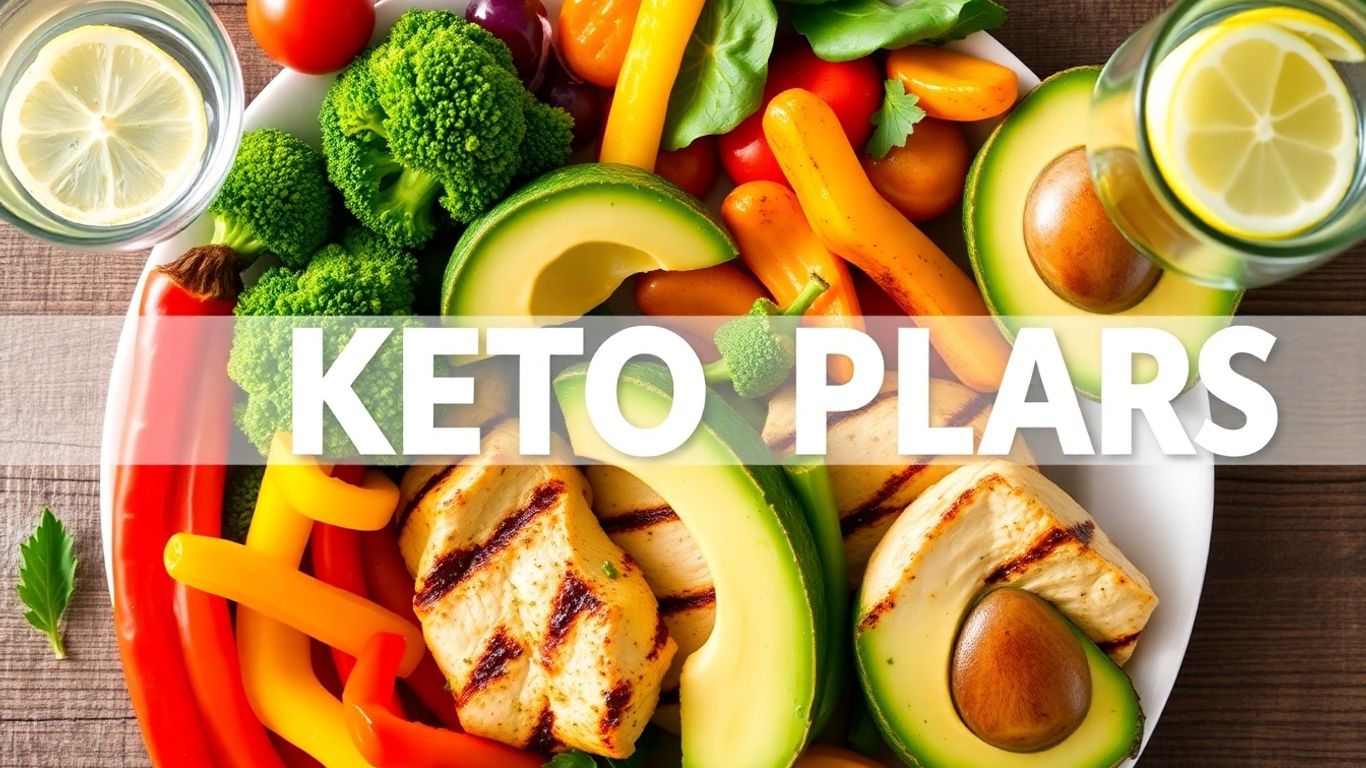
Starting a ketogenic diet can feel like a big change, and honestly, it is! But with a little preparation and the right mindset, you can make this transition smoother than you think. It’s not about perfection, but about making consistent, smart choices. Think of it as learning a new way to fuel your body, one that might just surprise you with how good you feel.
Tips For Starting Keto As A Beginner
Getting started on keto doesn’t have to be complicated. The key is to focus on the basics and build from there. Don’t try to do everything at once; take it step by step.
- Clean out your kitchen: Get rid of tempting high-carb foods. If they aren’t in the house, you can’t eat them when a craving hits. This is a simple but effective first step.
- Stock up on keto-friendly staples: Make sure you have plenty of healthy fats, proteins, and low-carb vegetables on hand. This makes meal prep much easier.
- Plan your meals: Even a rough plan for the first week can make a huge difference. Knowing what you’ll eat takes the guesswork out of daily decisions.
- Stay hydrated: Drink plenty of water throughout the day. This is super important, especially when you’re first starting out.
- Replenish electrolytes: You might lose more electrolytes initially. Adding a bit more salt to your food or sipping on some bone broth can help.
It’s easy to get overwhelmed by all the information out there. Focus on the core principles: reduce carbs, increase healthy fats, and eat enough protein. Small, consistent changes are more sustainable than drastic overhauls.
Navigating Your First Week On Keto
Your first week is often the most challenging, mainly because your body is adjusting. You might experience what’s commonly called the “keto flu.” Symptoms can include headaches, fatigue, and irritability. This is usually temporary and a sign your body is adapting.
- Prioritize hydration and electrolytes: As mentioned, this is key to minimizing keto flu symptoms. Don’t skimp on water and salt.
- Don’t aim for perfection: If you slip up and eat something off-plan, don’t beat yourself up. Just get back on track with your next meal. It’s a marathon, not a sprint.
- Listen to your body: Pay attention to how you feel. Are you hungry? Are you satisfied? Adjust your food intake accordingly.
Adjusting To A Low-Carb Lifestyle
Switching to a low-carb lifestyle means changing some long-standing eating habits. It might feel strange at first, but your taste buds will adapt, and you’ll likely find you enjoy new foods and flavors. You’ll discover that many delicious meals can be made without relying on bread, pasta, or sugar. For instance, cauliflower can be a fantastic substitute for rice or mashed potatoes, and zucchini noodles are a great alternative to pasta. This shift can lead to more stable energy levels throughout the day, as you’re not experiencing the sugar highs and lows. You might also notice a decrease in cravings for sugary snacks once your body gets used to burning fat for fuel. It’s a process, and it takes a little time, but the benefits are often well worth the adjustment period. You can find great resources for keto-friendly recipes to help you explore new meal ideas.
Staying Motivated On Your Keto Journey
Motivation can ebb and flow, and that’s totally normal. Having strategies in place can help you stay on track, even when things get tough.
- Track your progress: Seeing how far you’ve come can be a huge motivator. This could be weight loss, how your clothes fit, or even just how much more energy you have.
- Find a support system: Connect with others who are also on a keto journey. Whether it’s online forums, friends, or family, having people to share experiences with can be incredibly helpful.
- Celebrate small wins: Acknowledge your successes, no matter how small. Did you stick to your plan for a whole day? Great! Did you resist a craving? Awesome!
Understanding Keto Macros
Macros, short for macronutrients, are the main components of food that provide energy: carbohydrates, protein, and fat. On a keto diet, the ratio is key. You’ll be eating significantly fewer carbs, a moderate amount of protein, and a higher percentage of fat. Understanding these ratios helps you make informed food choices. For example, knowing that fats should make up the largest portion of your diet guides your meal planning. It’s not about eating only fat, but about making fat your primary energy source. Many online calculators can help you determine your personal macro targets based on your age, weight, activity level, and goals. This personalized approach is more effective than a one-size-fits-all method. Tracking your macros can be a useful tool for beginners to ensure they’re hitting their targets.
Tracking Your Progress
Monitoring your progress is more than just stepping on the scale. While weight loss is a common goal, keto can offer other benefits too. Keep a journal to note changes in your energy levels, sleep quality, mood, and even skin clarity. Sometimes, the most significant improvements aren’t visible on a scale. Regular check-ins, whether weekly or bi-weekly, help you see the positive impact keto is having on your overall well-being. This holistic view of progress can be incredibly encouraging and help you stay committed to the lifestyle.
Exploring Delicious Keto Recipes
Finding recipes that fit the ketogenic lifestyle doesn’t have to be a chore. In fact, there’s a whole world of tasty dishes out there that are naturally low in carbs and high in flavor. Whether you’re looking for something quick to whip up on a busy weeknight or a more elaborate meal for a special occasion, you’ll find plenty of options. We’ve gathered a variety of recipes to make your keto journey enjoyable and satisfying.
Easy Keto Breakfast Recipes
Mornings can be hectic, but starting your day with a keto-friendly breakfast sets a positive tone. Forget sugary cereals; think satisfying options that keep you full. Scrambled eggs with avocado and a side of bacon are a classic for a reason. If you’re short on time, hard-boiled eggs or a quick smoothie made with unsweetened almond milk, a scoop of protein powder, and a handful of berries can be a lifesaver. Another simple idea is to prepare a batch of keto muffins over the weekend to grab and go during the week.
Quick Keto Lunch Ideas
Lunchtime often presents a challenge, especially if you’re on the go. The good news is that many keto meals are perfect for leftovers or can be assembled quickly. Think large salads topped with grilled chicken or salmon, or a simple plate of deli meats, cheese, and some non-starchy vegetables like cucumber slices and bell peppers. Tuna salad or egg salad made with mayonnaise and served in lettuce cups are also great options. For those who like to plan ahead, pre-portioned containers of chicken salad or a hearty keto soup can be a real time-saver.
Flavorful Keto Dinner Recipes
Dinner is where you can really get creative. From succulent steaks and roasted chicken to flavorful fish dishes, the possibilities are vast. Many traditional dinner favorites can be easily adapted to be keto-compliant. For instance, instead of pasta, try zucchini noodles or spaghetti squash. Cauliflower rice is a fantastic substitute for regular rice. You can explore a wide range of healthy low-carb dinner recipes that are perfect for family meals or just for treating yourself.
Here’s a look at how to build a balanced keto plate for dinner:
- Protein Source: Aim for a generous portion of meat, poultry, fish, or eggs.
- Non-Starchy Vegetables: Fill at least half your plate with greens, broccoli, asparagus, or other low-carb veggies.
- Healthy Fats: Include fats from cooking oils, butter, avocado, or fatty sauces to add flavor and satiety.
Keto Snack Recipes
Snacking can be part of a keto lifestyle, especially if you get hungry between meals. The key is to choose snacks that are low in carbs and high in fat and protein. Hard-boiled eggs, cheese sticks, a handful of almonds or macadamia nuts, or olives are all excellent choices. For something a bit more substantial, consider fat bombs (small, dense treats made with healthy fats) or a small portion of jerky. Remember, snacks should complement your meals, not replace them.
Keto Dessert Options
Who says you can’t have dessert on keto? With a few smart substitutions, you can enjoy sweet treats without derailing your progress. Sugar-free sweeteners like erythritol or stevia can be used in baking. Berries, like raspberries and strawberries, are lower in sugar than most fruits and can be enjoyed in moderation. Think keto-friendly cheesecakes, chocolate avocado mousse, or berry-based crumbles. Just be mindful of portion sizes and the sweeteners you use.
Vegetarian Keto Recipes
Going vegetarian and keto might sound tricky, but it’s entirely possible. Focus on protein sources like eggs, cheese, tofu, and tempeh. Load up on non-starchy vegetables and healthy fats from sources like avocados, nuts, seeds, and olive oil. Many recipes can be adapted by swapping out meat for vegetarian protein. For example, a hearty mushroom and spinach frittata or a tofu scramble with vegetables can make for a delicious keto meal.
Dairy-Free Keto Recipes
If you’re avoiding dairy, you’ll be glad to know there are plenty of dairy-free keto options. Use unsweetened almond milk, coconut milk, or macadamia nut milk in place of dairy milk. Coconut oil, olive oil, and avocado oil are great fat sources. For creamy textures in sauces or desserts, avocado or coconut cream can be used. Many recipes can be easily modified by simply omitting the dairy or substituting with a dairy-free alternative.
Budget-Friendly Keto Meals
Eating keto doesn’t have to break the bank. Planning meals around less expensive cuts of meat, buying in bulk when possible, and utilizing seasonal vegetables can help keep costs down. Eggs and canned fish are often affordable protein sources. Making your own snacks and meals from scratch, rather than buying pre-made keto products, can also lead to significant savings. Don’t forget to check out recipes specifically designed to be budget-friendly keto meals.
The beauty of keto recipes lies in their adaptability. Don’t be afraid to experiment with different spices, herbs, and cooking methods to find what you love. Small tweaks can make a big difference in flavor and satisfaction, keeping your meals exciting and sustainable.
Advanced Ketogenic Diet Strategies
So, you’ve got the basics of keto down, and you’re ready to take things up a notch. That’s awesome! Moving beyond the beginner phase means exploring ways to make the ketogenic lifestyle work even better for you, whether that’s fitting it in with a busy schedule or optimizing your results. It’s not just about what you eat, but how you integrate it into your life.
Intermittent Fasting and Keto
Combining intermittent fasting (IF) with a ketogenic diet can be a powerful duo for many. IF involves cycling between periods of eating and voluntary fasting. When you combine this with keto, you’re essentially giving your body extended periods to tap into fat stores for energy. This can amplify the fat-burning effects and potentially lead to quicker results for some. It’s not for everyone, though, and listening to your body is key. Some people find it helps with appetite control, making it easier to stick to their carb goals.
Keto Meal Planning on a Budget
Who says keto has to be expensive? It definitely doesn’t. You can eat well on a budget by focusing on whole, less processed foods. Think eggs, chicken thighs, ground beef, and seasonal vegetables. Buying in bulk when possible and planning your meals to minimize waste are also smart moves. Don’t overlook frozen vegetables and fruits; they’re often cheaper and just as nutritious. Planning ahead is your best friend here, so you’re not tempted by convenience foods when hunger strikes.
Keto for Families
Making keto work for the whole family can be a challenge, but it’s totally doable. The key is to adapt meals so everyone can enjoy them. You might make a keto-friendly casserole and serve a side of rice or bread for non-keto eaters. Focus on meals that are naturally low in carbs, like roasted chicken with vegetables, or build-your-own taco bowls where everyone can customize their toppings. It’s about finding common ground and making healthy eating a family affair.
Keto Diet Plan for Weight Loss
For many, weight loss is the primary driver for starting keto. By drastically reducing carbohydrate intake, your body enters a state of ketosis, where it burns fat for fuel instead of glucose. This metabolic shift can lead to significant appetite suppression and increased fat burning. The goal is to create a sustainable calorie deficit while fueling your body with nutrient-dense, high-fat foods. Remember, while keto can be effective for weight loss, it’s important to focus on overall health and well-being, not just the number on the scale. You can find more information on how this approach works for weight loss.
Keto for Athletes and Performance
Athletes are increasingly exploring keto for its potential performance benefits. Some find that a well-formulated ketogenic diet can lead to improved endurance, stable energy levels during prolonged exercise, and faster recovery times. The body’s ability to efficiently use fat for fuel means a virtually limitless energy supply during long events. However, adapting to keto as an athlete takes time, and careful attention to electrolyte balance and nutrient timing is important. It’s a different kind of fuel, and your body needs to learn how to use it effectively.
Traveling While on Keto
Traveling and sticking to keto might sound tricky, but with a little planning, it’s quite manageable. Pack keto-friendly snacks like nuts, seeds, and jerky for the journey. When eating out, look for protein-rich options like grilled meats or fish with non-starchy vegetables. Don’t be afraid to ask for modifications, like sauces on the side or extra butter. Many restaurants are becoming more accommodating to dietary needs. Having a few go-to keto meals in mind can make all the difference.
Maintaining Ketosis Long-Term
Sticking with keto long-term is about making it a sustainable lifestyle, not a temporary diet. This involves finding a balance that works for you, listening to your body, and not being overly rigid. Some people find success with cyclical or targeted keto, where they strategically reintroduce carbs around intense workouts. The key is consistency, but also flexibility. It’s about creating habits that support your health goals without feeling deprived or overly restricted.
Reintroducing Carbs After Keto
Deciding when and how to reintroduce carbohydrates after a period on keto is a personal choice. Some people choose to stay keto long-term, while others may want to reintroduce carbs gradually to see how their body responds. If you decide to reintroduce carbs, do so slowly and mindfully. Focus on whole food sources like fruits, starchy vegetables, and whole grains. Pay attention to how your body feels – energy levels, digestion, and any changes in weight or mood. It’s about finding your personal carb tolerance and maintaining a balanced approach to eating.
Understanding Keto-Friendly Beverages
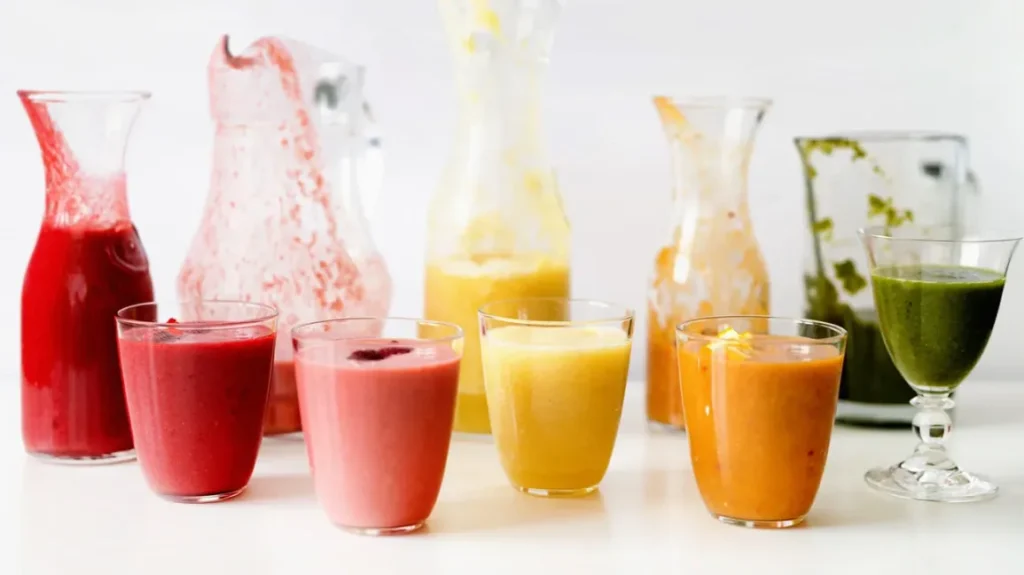
When you’re on the ketogenic diet, what you drink is just as important as what you eat. The goal is to keep carbs super low, and unfortunately, many common drinks are loaded with sugar and carbs. Think sodas, juices, and even some sweetened coffees. Sticking to keto-friendly beverages is key to staying in ketosis.
The Best Keto Drinks
So, what can you drink? The simplest answer is water. It’s calorie-free, carb-free, and absolutely vital for staying hydrated, especially when your body is adjusting to a new way of eating. Beyond plain water, there are several other great options:
- Sparkling Water: If you miss the fizz of soda, sparkling water is your best friend. You can jazz it up with a squeeze of lemon or lime, or even some fresh mint. It’s a refreshing way to get your hydration in without any sugar.
- Unsweetened Coffee and Tea: Black coffee and unsweetened tea (green, black, or herbal) are perfectly fine. If you like a little creaminess, a splash of heavy cream or unsweetened almond milk is usually acceptable. Just be mindful of flavored creamers, as they often pack a hidden carb punch.
- Broth: Bone broth or vegetable broth can be a lifesaver, especially when you’re first starting out. It’s not just hydrating; it can also help replenish electrolytes, which you might lose as your body adapts. Plus, it’s warm and comforting.
Hydration on the Keto Diet
Staying hydrated is more than just quenching thirst. On keto, it plays a role in managing potential side effects like headaches and fatigue, often referred to as the ‘keto flu’. Aim to drink plenty of water throughout the day. A good rule of thumb is to drink half your body weight in ounces, but listen to your body – if you feel thirsty, drink up!
Coffee and Tea on Keto
Coffee and tea are generally safe bets for a keto diet. The key is to avoid added sugars. A plain black coffee or tea has zero carbs. If you prefer a bit of richness, heavy cream is a good choice because it’s high in fat and very low in carbs. Unsweetened almond milk or coconut milk are also popular alternatives. Just double-check the labels on any milk alternatives to make sure they don’t have added sugars. Some people even add a bit of butter or MCT oil to their coffee for an extra fat boost, creating what’s known as ‘bulletproof coffee’.
Broth as a Keto Beverage
Broth, particularly bone broth, is a fantastic beverage choice for anyone on a ketogenic diet. It’s packed with minerals and electrolytes like sodium, potassium, and magnesium, which can help combat the symptoms of the keto flu. It’s also incredibly low in calories and carbs, making it a guilt-free way to stay hydrated and satisfied. Sipping on a warm mug of broth can be very comforting, especially on a chilly day.
Low-Carb Alcoholic Drinks
Alcohol can be tricky on keto. While many alcoholic drinks are loaded with carbs (think beer and sugary cocktails), there are some lower-carb options if you choose to indulge occasionally. Spirits like vodka, gin, rum, and whiskey are generally carb-free. You can mix them with club soda, diet tonic water, or sugar-free mixers. Dry wines, especially red wines, tend to have fewer carbs than sweet wines. Always drink in moderation and be aware that alcohol can sometimes stall weight loss or make it harder to stick to your diet.
Beverages to Avoid on Keto
This is where you need to be really vigilant. Many everyday drinks are carb bombs. You’ll want to steer clear of:
- Sugary Sodas: Regular cola, lemon-lime soda, and root beer are packed with sugar.
- Fruit Juices: Even 100% fruit juice is very high in natural sugars and carbs. Think of it as drinking several pieces of fruit at once.
- Sweetened Teas and Coffees: Pre-made iced teas, flavored lattes, and other coffee shop concoctions are often loaded with sugar.
- Sports Drinks: Designed to replenish carbs and electrolytes for athletes, these are generally too high in sugar for keto.
- Milk: While not as high in sugar as juice, regular milk still contains lactose, a natural sugar, and can add up in carbs quickly.
Sparkling Water Benefits
Sparkling water is more than just a bubbly alternative to flat water. It can help you feel fuller, which might aid in appetite control. The carbonation can also be quite satisfying, making it a great substitute for soda. Plus, it’s a fantastic vehicle for adding flavor to your water without adding any carbs or calories. You can experiment with different fruit essences or add fresh herbs like mint or basil for a refreshing twist. It’s a simple way to make hydration more enjoyable and support your low-carb lifestyle.
Making Keto Drinks at Home
Creating your own keto-friendly drinks at home is easy and cost-effective. For flavored water, simply add slices of cucumber, lemon, lime, or berries to a pitcher of water and let it infuse in the fridge. You can also make your own unsweetened iced tea or cold brew coffee. For a creamy coffee or tea, keep a carton of heavy cream or unsweetened almond milk on hand. If you enjoy smoothies, blend unsweetened almond milk or coconut milk with avocado, spinach, and a keto-friendly sweetener for a thick, satisfying treat.
Navigating Social Situations On Keto
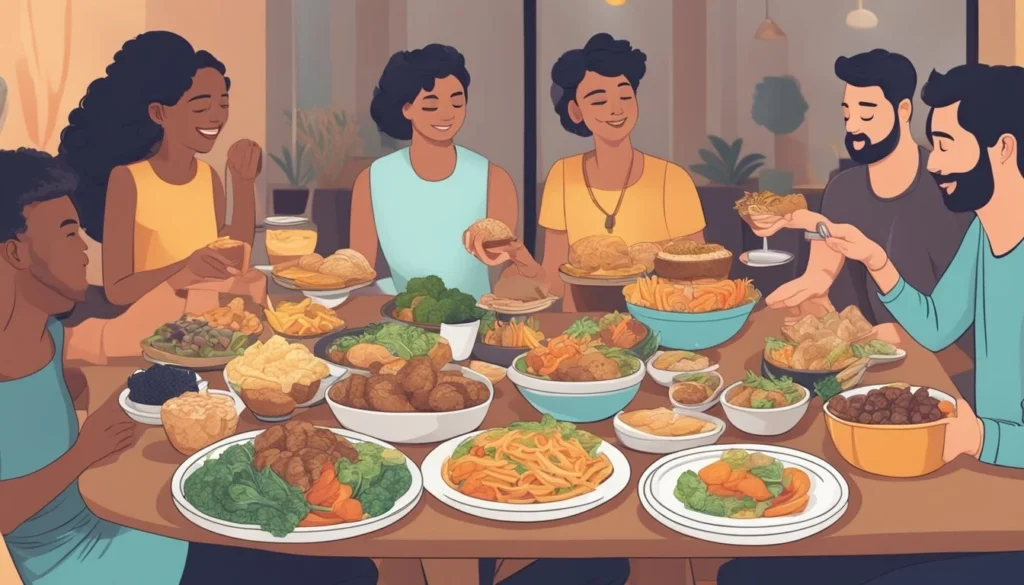
Eating out or attending social gatherings can feel a bit tricky when you’re sticking to a ketogenic diet. It’s totally doable, though! The key is a little bit of planning and knowing what to look for. Don’t let social events derail your progress.
Eating Out While Following Keto
When you’re heading to a restaurant, check the menu online beforehand if possible. Look for options that are naturally low in carbs. Think grilled meats or fish, and ask for extra non-starchy vegetables instead of fries or mashed potatoes. A simple salad with a high-fat dressing is often a safe bet. Just be mindful of hidden sugars in dressings and sauces. You might need to ask for dressing on the side.
Explaining Keto To Friends And Family
People might be curious about why you’re eating differently. Keep your explanation simple. You can say something like, “I’m trying out a way of eating that helps me feel more energetic and focused.” Most people are supportive once they understand it’s a personal health choice. You don’t need to get into all the nitty-gritty details unless you want to.
Handling Holiday Meals On Keto
Holidays can be a minefield of carb-heavy dishes. Focus on the protein and vegetable options available. Turkey, ham, roast beef, and green beans are usually safe bets. You can bring a keto-friendly dish to share, like a cauliflower gratin or a big green salad with a homemade vinaigrette. This way, you know you’ll have something delicious to eat.
Potluck Strategies For Keto Dieters
Potlucks are similar to holiday meals. Scope out the offerings and fill your plate with the most keto-appropriate items. Again, bringing your own dish is a great strategy. Consider something like keto-friendly chicken salad or a platter of cheese and olives. It’s a good way to ensure you have a satisfying meal.
Choosing Keto Options At Restaurants
Here’s a quick guide to common restaurant choices:
| Food Type | Keto-Friendly Options |
|---|---|
| Proteins | Grilled chicken, steak, fish, pork chops, eggs |
| Vegetables | Broccoli, spinach, asparagus, green beans, side salad |
| Fats | Avocado, olive oil, butter, cheese (in moderation) |
| Avoid | Bread, pasta, rice, potatoes, sugary sauces, fried foods |
Dealing With Social Pressure
Sometimes, people might tease you or try to convince you to eat off-plan. Just politely decline. “No, thank you, I’m good,” usually does the trick. Remember why you started this journey and stay focused on your goals. Your health is the priority.
Finding Keto-Friendly Social Activities
Think outside the food box! Suggest activities that don’t revolve around eating, like going for a hike, seeing a movie, or visiting a museum. If the activity does involve food, like a picnic, you can plan ahead by bringing your own keto snacks. This way, you can enjoy the company without compromising your diet.
Maintaining Your Diet In Social Settings
It’s all about balance. Don’t stress too much if you accidentally go over your carb limit once in a while. Just get back on track with your next meal. Consistency is more important than perfection. A little bit of planning goes a long way in making social situations feel manageable and enjoyable on keto.
Common Ketogenic Diet Myths Debunked
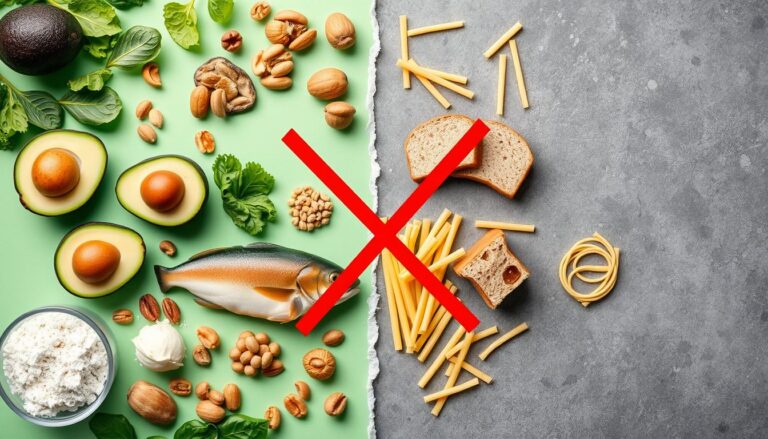
Alright, let’s talk about some of the stuff you hear about the keto diet. There’s a lot of chatter out there, and not all of it is accurate. We’re going to break down some of the most common myths so you can feel more confident about this way of eating.
Myth: Keto Is Just A High-Fat Diet
This one is a bit of a simplification. While keto is definitely high in fat, it’s not just about eating as much fat as possible. The key is the ratio of macronutrients. You’re significantly cutting carbs, keeping protein moderate, and then filling the rest of your caloric needs with healthy fats. It’s about balance, not just indulgence. Think of it as a strategic shift in where your body gets its energy, not a free pass to eat butter by the spoonful. The goal is to get your body into a state of ketosis, where it burns fat for fuel instead of glucose. This requires a specific macronutrient breakdown, typically around 70-75% fat, 15-20% protein, and only 5-10% carbohydrates.
Myth: You Can’t Eat Vegetables On Keto
This is just not true! You absolutely can and should eat vegetables on keto. The trick is to focus on non-starchy vegetables. These are the ones that grow above ground and are lower in carbohydrates. We’re talking leafy greens like spinach and kale, broccoli, cauliflower, bell peppers, zucchini, and asparagus. These veggies are packed with vitamins, minerals, and fiber, which are super important for overall health and can help you feel full. You’ll want to limit starchy vegetables like potatoes, corn, and peas, as they’re much higher in carbs. It’s all about making smart choices within the low-carb framework.
Myth: Keto Is Bad For Your Heart
This is a big one, and honestly, the research is pretty interesting. For a long time, people were worried that the higher fat intake on keto would be bad for heart health. However, many recent studies and systematic reviews have actually shown the opposite. They indicate that ketogenic diets can improve various heart health markers, like cholesterol levels and blood pressure. It seems that focusing on healthy fats and reducing processed carbs can have a positive impact. It’s not about eating just any fats, but choosing good sources like avocados, olive oil, nuts, and fatty fish. Some research even suggests that low-carb diets may be beneficial for cardiovascular risk factors [b1ee].
Myth: Keto Causes Nutrient Deficiencies
Like any diet, if you don’t plan it well, you could miss out on certain nutrients. But a well-formulated keto diet, rich in non-starchy vegetables, healthy fats, and moderate protein, can be very nutrient-dense. The key is variety. By including a wide range of approved foods – think colorful veggies, different types of proteins, and healthy fats – you can get all the vitamins and minerals you need. If you’re concerned, it’s always a good idea to talk to a healthcare provider or a registered dietitian. They can help you ensure your plan is balanced.
Myth: Keto Is Unsustainable Long-Term
Sustainability really depends on the individual and how they approach the diet. For some, the strict carb restriction might feel challenging over time. However, many people find that once they adapt, they feel great and have more energy, making it sustainable. Plus, there are ways to adapt keto over the long haul, like cycling carbs or finding a more flexible approach that works for your lifestyle. It’s not necessarily an all-or-nothing situation forever. Many find that the reduced hunger and increased satiety make it easier to stick with than other diets.
Myth: Keto Is Only For Weight Loss
While weight loss is a common reason people start keto, it’s not the only benefit. People also explore keto for improved energy levels, better mental clarity, and managing certain health conditions. The metabolic state of ketosis can have various effects on the body beyond just shedding pounds. It’s a dietary approach that can influence how your body functions in several ways.
Myth: Keto Flu Is Dangerous
The
Optimizing Your Ketogenic Diet Plan
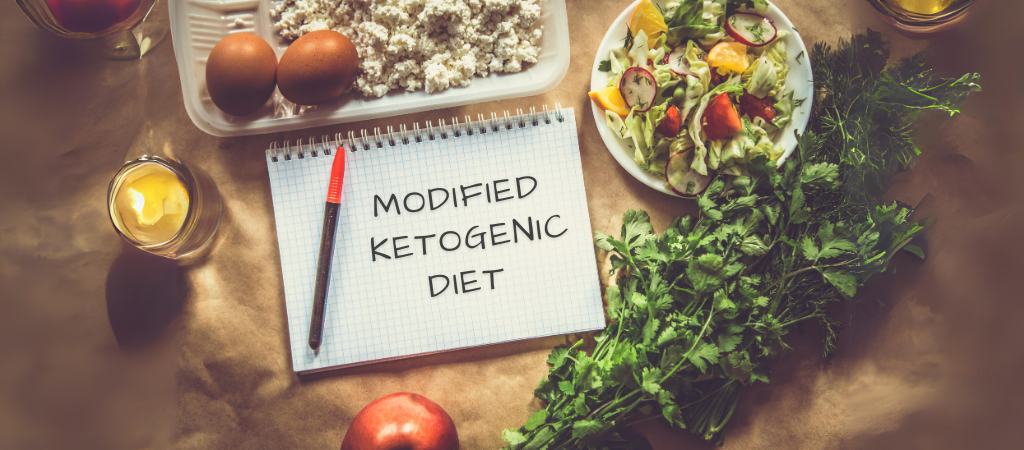
So, you’ve got the keto basics down, you’re prepping meals, and you’re even starting to recognize the difference between a good fat and… well, not-so-good fat. That’s awesome! But what happens when you want to take things up a notch, or maybe just make sure you’re really getting the most out of this low-carb lifestyle? That’s where optimizing comes in. It’s not about perfection, but about making smart adjustments so keto works for you, not the other way around.
Fine-Tuning Your Keto Macros
Macros – protein, fat, and carbs – are the building blocks of your keto diet. While the general guidelines are helpful, everyone’s body is a little different. You might find that you feel best with slightly more fat, or perhaps you can handle a bit more protein without it kicking you out of ketosis. Paying attention to how you feel after meals and throughout the day can give you clues. Are you constantly hungry? Maybe a little more protein or fat is needed. Feeling sluggish? Double-check your carb count. It’s a bit of trial and error, but listening to your body is key.
Listening To Your Body’s Signals
This is probably the most important part of optimizing. Your body talks to you all the time, you just have to learn to hear it. Are you sleeping well? Do you have energy for your workouts (or just to get through the day)? Are you feeling satisfied after meals? These are all signals. If something feels off, don’t just push through it. See if a small tweak to your food intake might help. Maybe you need more electrolytes, or perhaps you’re eating too much of something.
Adjusting Your Diet Based On Activity
If you’re hitting the gym hard or have a physically demanding job, your body’s needs will change. You might need more protein to help with muscle repair and growth. Some people even find they can tolerate a few more carbs on days they are very active, though this is more advanced. For most, focusing on adequate protein and healthy fats is usually enough to support activity levels.
Incorporating Variety Into Your Meals
Eating the same few meals every single day can get boring, and boredom often leads to falling off the wagon. Try to mix things up! Explore different keto-friendly vegetables, try new protein sources, and experiment with different healthy fats. This not only keeps things interesting but also helps ensure you’re getting a wider range of nutrients.
Experimenting With New Keto Recipes
Speaking of variety, recipes are your best friend. There are tons of amazing keto recipes out there for everything from breakfast to dessert. Don’t be afraid to try something new. You might discover a new favorite meal that makes sticking to keto even easier. Plus, cooking new things can be a fun way to spend an afternoon.
Monitoring Your Energy Levels
Energy is a big one. When you first start keto, you might experience the ‘keto flu,’ but once you’re adapted, you should feel pretty good. If your energy levels are consistently low, it’s worth looking at your diet. Are you eating enough calories? Are you getting enough healthy fats? Sometimes, a simple increase in fat intake can make a big difference in how energetic you feel.
Assessing Your Sleep Quality
Sleep and diet are closely linked. Poor sleep can affect your hunger hormones and make you crave unhealthy foods. If you’re struggling with sleep, consider if your diet might be playing a role. Are you getting enough magnesium? Are you eating too close to bedtime? Small changes can sometimes lead to big improvements in sleep quality.
Making Keto A Sustainable Habit
Ultimately, the goal is to make keto a way of eating that you can stick with long-term. This means finding a balance that works for your life, your preferences, and your health goals. It’s not about being perfect every single day, but about making consistent, smart choices that support your well-being. If you have to force it every day, it’s probably not sustainable. Find what you enjoy and make it work for you.
The Role Of Fats In A Ketogenic Diet
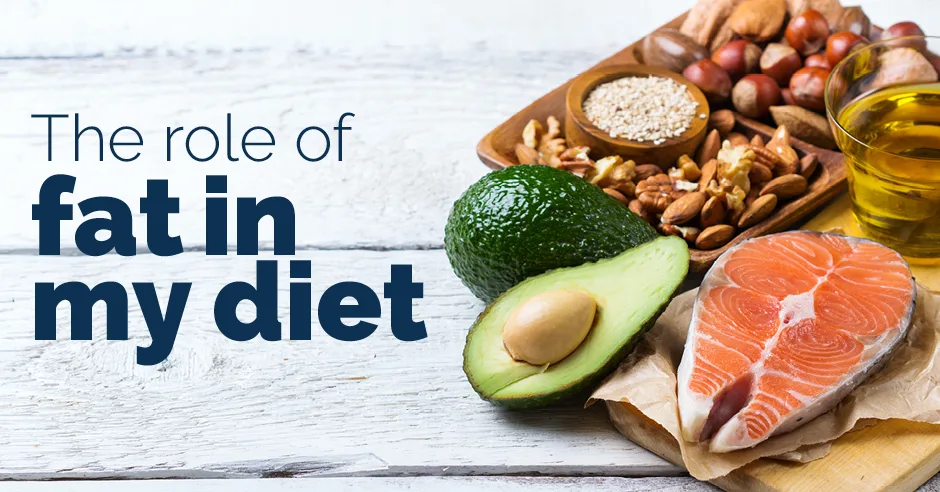
Fats are the main event on a ketogenic diet. Seriously, they make up the bulk of your daily calories, usually around 70-75%. This isn’t just about eating more fat; it’s about choosing the right kinds of fats to fuel your body and keep you in ketosis. Think of fats as your primary energy source when carbs are kept super low.
Understanding Healthy Fats
Not all fats are created equal, especially on keto. You want to focus on unsaturated fats, which are generally considered heart-healthy. These are the ones that can help manage cholesterol levels. While saturated fats have their place, it’s wise to keep them in check. The general advice is to limit saturated fat intake to maintain overall health while on this diet.
Sources of Saturated Fats
Saturated fats are often found in animal products and some tropical oils. While they can be part of a keto diet, moderation is key. Some common sources include:
- Butter
- Heavy cream
- Coconut oil
- Fatty cuts of meat
- Cheese
Monounsaturated Fats for Keto
These are fantastic for keto! Monounsaturated fats are liquid at room temperature and tend to be solid when chilled. They’re great for cooking and adding richness to meals. You’ll find them in:
- Olive oil
- Avocado oil
- Avocados
- Nuts like almonds and pecans
Polyunsaturated Fats and Keto
Polyunsaturated fats include omega-3 and omega-6 fatty acids. While both are important, it’s generally recommended to have a good balance, leaning towards more omega-3s. Good sources include:
- Fatty fish (salmon, mackerel, sardines)
- Walnuts
- Flaxseeds
- Chia seeds
Medium-Chain Triglycerides (MCTs)
MCT oil, often derived from coconut oil, is a popular addition to keto diets. MCTs are a type of saturated fat that the body can process differently, converting them into ketones more readily. Some people find it helps boost energy and satiety. You can add MCT oil to coffee or smoothies, but start with small amounts to avoid digestive upset.
Fats for Cooking and Flavor
When you’re cooking on keto, the type of fat you use matters. High-heat cooking often calls for oils with a higher smoke point, like avocado oil or ghee. For dressings and lower-heat applications, olive oil is a great choice. Don’t be afraid to use fats like butter and heavy cream to add flavor and richness to your dishes.
Balancing Fat Intake
While fats are high on keto, it’s not a free-for-all. You still need to be mindful of your overall intake and the types of fats you’re consuming. Focusing on whole food sources of fat is generally the best approach. It’s important to remember that the impact of low-carb, high-fat diets on cholesterol can vary, so individual monitoring is key to understanding your personal responses. Learn more about cholesterol.
Avoiding Unhealthy Fats
This is a big one. You’ll want to steer clear of trans fats, which are often found in processed foods and some margarines. These are harmful to your health. Also, be cautious with highly processed vegetable oils that are high in omega-6 fatty acids. Prioritizing whole, unprocessed fats is the way to go.
The ketogenic diet emphasizes high fat intake, with up to 80 percent of calories coming from fat. It is crucial to limit saturated fat consumption to maintain health while following this diet. Read about saturated fat.
Protein Intake On The Ketogenic Diet
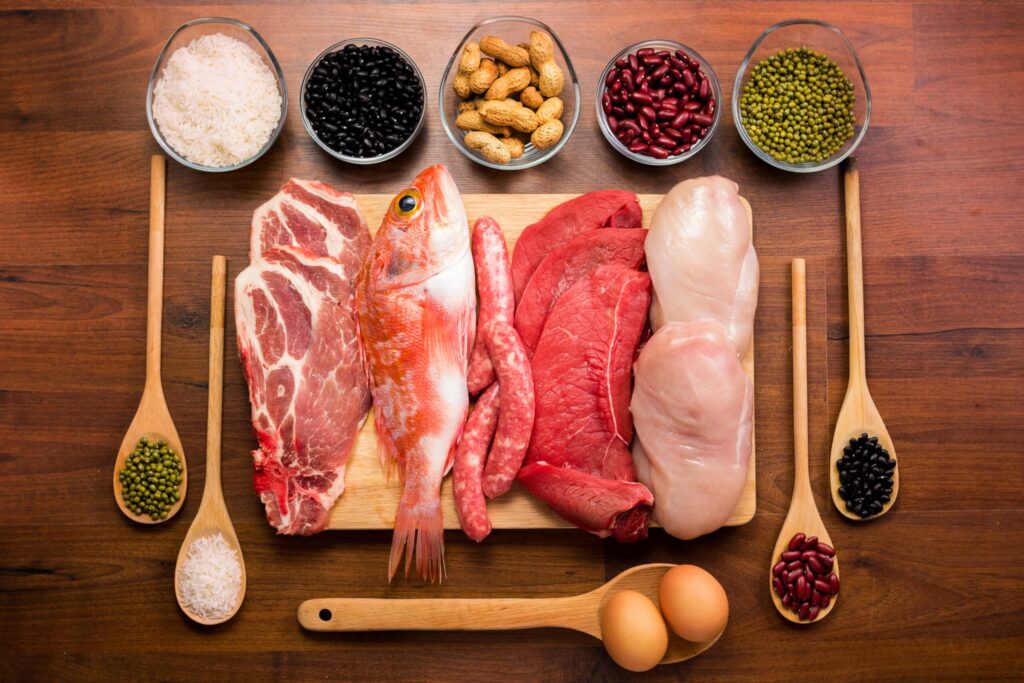
Protein is a really important part of any diet, and keto is no different. While the keto diet is famous for being high in fat and low in carbs, getting enough protein is key to making sure your body functions well and you feel satisfied after meals. It’s not just about hitting a number; it’s about choosing the right kinds of protein and making sure you’re not overdoing it, which can actually kick you out of ketosis.
Importance Of Adequate Protein
Think of protein as the building blocks for your body. It helps keep your muscles strong, supports your immune system, and plays a role in all sorts of bodily processes. On a ketogenic diet, protein is particularly important because it helps you feel full, which can make sticking to your low-carb goals a lot easier. When you’re not constantly hungry, you’re less likely to reach for those tempting high-carb snacks. Getting enough protein helps maintain muscle mass, especially if you’re also trying to lose weight.
Lean Protein Sources
When you’re focusing on protein for keto, lean options are great. These provide essential amino acids without adding a lot of extra fat that might push your macros out of balance. Some good choices include:
- Chicken breast
- Turkey breast
- Fish like cod or tilapia
- Shrimp and other shellfish
These are versatile and can be used in a ton of different meals, from salads to stir-fries.
Fatty Protein Sources
Don’t shy away from protein sources that also come with healthy fats. These can be super satisfying and fit perfectly into the keto framework. Remember, fat is your primary energy source on keto, so these foods can help you meet your fat goals while also getting your protein in.
- Salmon and other fatty fish
- Chicken thighs (with skin on)
- Ground beef (especially fattier grinds)
- Pork belly
These options are not only delicious but also provide those beneficial omega-3 fatty acids, especially in fatty fish.
Protein For Muscle Maintenance
If you’re active or trying to lose weight, preserving muscle mass is a big deal. Protein is absolutely vital for this. When you’re in a calorie deficit, your body might start breaking down muscle for energy if you’re not getting enough protein. Keto, with its focus on fat, can sometimes make people worry about muscle loss, but by ensuring adequate protein intake, you can help prevent this. It’s a balancing act, though; too much protein can be converted to glucose, so finding that sweet spot is important.
Calculating Your Protein Needs
Figuring out how much protein you actually need can feel a bit like a puzzle. A common starting point for a ketogenic diet is around 15-20% of your total daily calories coming from protein. However, this can vary a lot based on your activity level, age, and whether you’re trying to lose weight or build muscle.
Here’s a general guideline:
| Goal | Protein Intake (grams per kg of body weight) | Protein Intake (grams per lb of body weight) |
|---|---|---|
| Sedentary/Weight Loss | 1.2 – 1.7 g/kg | 0.5 – 0.8 g/lb |
| Moderately Active | 1.6 – 2.2 g/kg | 0.7 – 1.0 g/lb |
| Very Active/Muscle Gain | 2.0 – 2.4 g/kg | 0.9 – 1.1 g/lb |
It’s often recommended to aim for a protein intake that supports muscle maintenance without being excessively high. For many, this lands somewhere between 0.7 to 1 gram of protein per pound of lean body mass.
Protein And Satiety
One of the big wins with protein on keto is how filling it is. Protein takes longer to digest than carbohydrates, which means it keeps you feeling satisfied for longer periods. This effect, combined with the fat content of keto meals, can significantly reduce overall hunger and cravings. It’s a powerful tool for managing your appetite and sticking to your eating plan without feeling deprived.
Potential Pitfalls Of Too Much Protein
While protein is great, there’s such a thing as too much of a good thing, especially on keto. If you consume significantly more protein than your body needs, your body can convert the excess into glucose through a process called gluconeogenesis. This can potentially interfere with your ability to stay in ketosis. It’s not a huge concern for most people who are just eating a balanced keto diet, but it’s something to be aware of if you’re consuming very large amounts of protein or if you’re struggling to maintain ketosis.
The key is balance. You want enough protein to support your body’s needs, keep you full, and preserve muscle, but not so much that it hinders your ketosis. Paying attention to how your body feels and tracking your macros can help you find that sweet spot.
Incorporating Protein Into Every Meal
To make sure you’re consistently getting enough protein throughout the day, try to include a protein source in every meal and snack. This strategy helps stabilize blood sugar, keeps hunger at bay, and ensures you’re meeting your protein targets without having to force it all down in one sitting. Think of it as building a solid foundation for each eating occasion. For example, start your day with eggs or a protein shake, have a salad with chicken or fish for lunch, and enjoy a steak or salmon for dinner. Even snacks can include hard-boiled eggs or a small handful of nuts.
Non-Starchy Vegetables For Keto
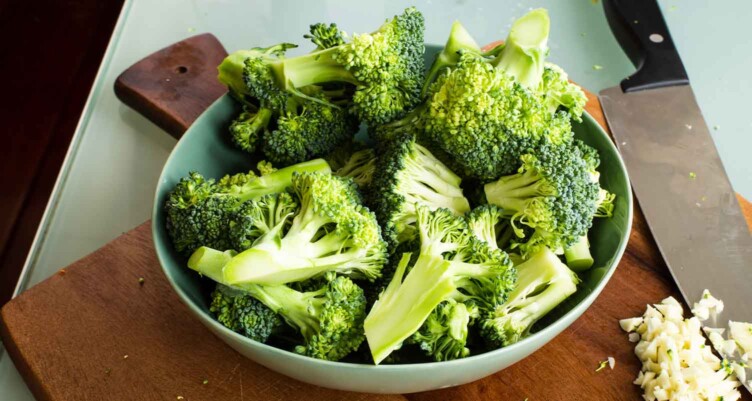
When you’re on the keto diet, you’ll want to fill your plate with plenty of non-starchy vegetables. These are your best friends for adding volume, nutrients, and fiber to your meals without packing in a lot of carbs. Think of them as the colorful, crunchy backbone of your keto eating plan.
The Best Keto Vegetables
It’s not just about avoiding potatoes and corn; there’s a whole world of delicious veggies that fit perfectly into a low-carb lifestyle. These are generally low in net carbs and high in fiber, vitamins, and minerals. Some of the top contenders include:
- Leafy Greens: Spinach, kale, romaine lettuce, arugula, and Swiss chard are incredibly versatile. You can toss them into salads, sauté them as a side dish, or even blend them into smoothies.
- Cruciferous Vegetables: Broccoli, cauliflower, Brussels sprouts, and cabbage are nutritional powerhouses. They’re great roasted, steamed, or mashed (hello, cauliflower mash!).
- Other Low-Carb Vegetable Options: Asparagus, bell peppers (especially green ones), zucchini, cucumbers, celery, mushrooms, and green beans are also fantastic choices.
Here’s a quick look at some popular keto vegetables and their approximate net carb counts per cup (raw, unless noted):
| Vegetable | Net Carbs (per cup) | Key Nutrients |
|---|---|---|
| Spinach | 1g | Vitamin A, Vitamin C, Iron |
| Broccoli | 3g | Vitamin C, Fiber |
| Cauliflower | 3g | Vitamin C, Fiber |
| Bell Peppers | 3g | Vitamin C, Vitamin B6 |
| Asparagus | 2g | Vitamin K, Folate |
| Zucchini | 3g | Vitamin C, Potassium |
| Mushrooms | 2g | Riboflavin, Selenium |
| Cucumber | 2g | Vitamin K, Hydration |
| Celery | 1g | Vitamin K, Hydration |
Preparing Keto Vegetables
How you prepare your veggies can make a big difference in taste and texture. Roasting brings out a natural sweetness, steaming keeps them crisp, and sautéing with healthy fats like olive oil or butter adds flavor and helps with nutrient absorption. Don’t be afraid to experiment!
Adding Flavor To Vegetables
Plain veggies can get boring, right? Jazz them up with herbs, spices, garlic, onion powder, or a drizzle of your favorite keto-friendly dressing. A little bit of cheese or a dollop of sour cream can also go a long way.
Vegetables To Limit On Keto
While most non-starchy vegetables are great, some are higher in carbs and should be eaten in moderation or avoided. These include starchy vegetables like potatoes, sweet potatoes, corn, peas, and winter squash (like butternut squash and pumpkin). Even fruits like bananas and pineapple are generally too high in sugar for strict keto.
Remember, the goal is to get plenty of nutrients and fiber from your vegetables without pushing your carb count too high. Focusing on the low-carb options will make sticking to your ketogenic diet plan much easier and more enjoyable.
Sweeteners And Fruits On Keto
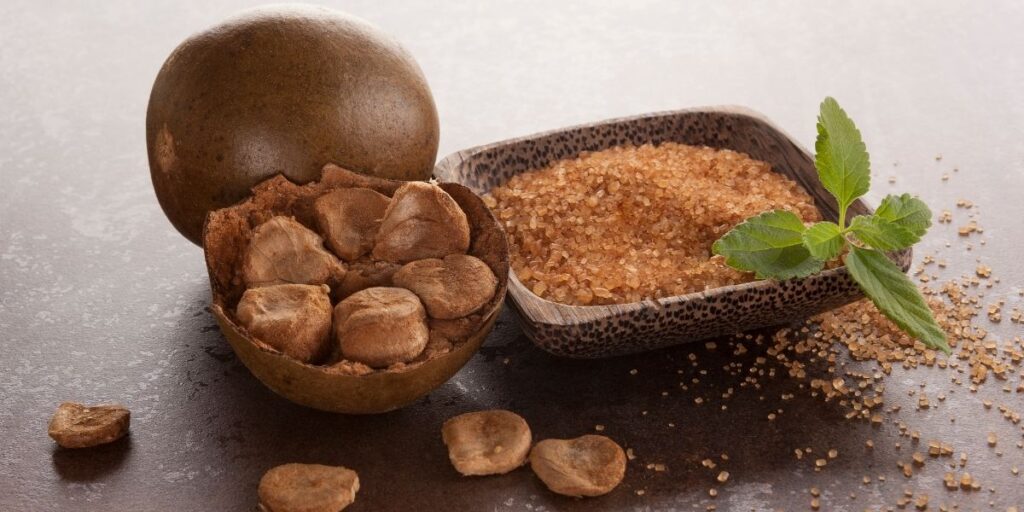
Navigating the world of sweeteners and fruits on a ketogenic diet can feel a bit tricky at first. You’re cutting out a lot of the usual suspects, but that doesn’t mean you have to live a life devoid of sweetness or the occasional fruity treat. It’s all about making smart choices.
Keto-Friendly Sweeteners
When you’re craving something sweet, you’ve got options that won’t kick you out of ketosis. These sweeteners are generally recognized as low-digestible, meaning they don’t significantly spike your blood sugar. Think of them as your allies in keeping things low-carb. Some popular choices include:
- Erythritol: A sugar alcohol that’s about 70% as sweet as sugar and has almost no calories or impact on blood glucose.
- Stevia: Derived from a plant, it’s intensely sweet and has zero calories. A little goes a long way!
- Monk Fruit: Another natural, zero-calorie sweetener that’s gaining popularity.
- Xylitol: Similar to erythritol, but be cautious if you have pets, as it’s toxic to dogs.
It’s important to remember that even with these sweeteners, moderation is key. Overdoing it can sometimes lead to digestive upset for some people.
Low-Sugar Fruits
Fruits are nature’s candy, but many are packed with sugar. On keto, we focus on fruits that are lower in carbohydrates and higher in fiber. These are typically berries, which are fantastic because they offer antioxidants and flavor without a huge carb load. You can enjoy them in moderation as part of your daily carb limit.
Here’s a quick look at some good choices:
- Raspberries: Among the lowest in carbs and highest in fiber.
- Blackberries: Also a great option, offering a good amount of fiber.
- Strawberries: A bit higher in carbs than raspberries and blackberries, but still manageable in small portions.
- Blueberries: These are a bit more carb-dense, so you’ll want to be extra mindful of your portion size with these.
Portion Control For Fruits
This is where things get really important. Even the best keto fruits need to be eaten with a watchful eye on how much you’re consuming. A handful of berries is usually fine, but a whole pint might push you over your daily carb limit. It’s a good idea to measure out your portions, especially when you’re first starting out. This helps you get a feel for what a keto-friendly serving looks like.
Keeping track of your fruit intake is just as vital as monitoring your other carb sources. It’s easy to underestimate how much sugar is in even
Keto Meal Planning For Specific Needs
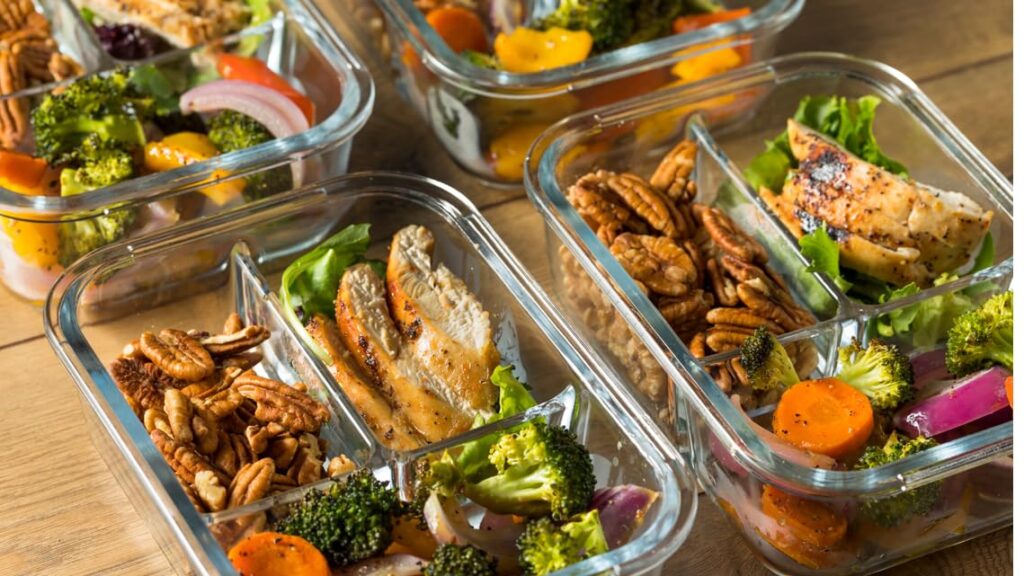
So, you’re looking to tailor your keto journey to fit your unique life, huh? That’s smart. It’s not a one-size-fits-all thing, and figuring out how to make it work for you is key. Whether you’re trying to shed some pounds, manage your blood sugar, fuel up for sports, or just survive a busy week, there are ways to adjust your keto plan.
Keto Diet Plan For Weight Loss
When weight loss is the goal, the focus is often on creating a calorie deficit while keeping carbs super low. This means prioritizing protein and healthy fats to keep you feeling full. You’ll want to pay close attention to portion sizes, even with keto-friendly foods. A good strategy is to build your plate with a generous serving of protein, a good amount of non-starchy vegetables, and healthy fats for cooking and flavor. This approach helps manage hunger and keeps your energy steady.
- Focus on protein: Aim for lean meats, fish, and eggs at every meal.
- Load up on non-starchy veggies: Think leafy greens, broccoli, cauliflower, and bell peppers.
- Healthy fats are your friend: Use olive oil, avocado oil, and butter, but be mindful of total calorie intake.
- Watch out for hidden carbs: Even some
Shopping Smart For Your Keto Diet
Alright, let’s talk about hitting the grocery store for your keto journey. It can feel a bit overwhelming at first, trying to figure out what goes in the cart and what stays on the shelf. But honestly, with a little planning, it becomes way easier. The goal is to make your shopping trips efficient and stock your kitchen with foods that fit your low-carb lifestyle.
Building a Smart Keto Shopping List
This is where the magic happens. Before you even think about leaving the house, sit down and jot down what you’ll need for the week. Think about your planned meals and snacks. What ingredients are you missing? What staples are running low? Having a list stops you from aimlessly wandering the aisles and grabbing things you don’t really need. It’s like a treasure map for your kitchen!
Prioritizing Whole Foods
When you’re at the store, try to stick to the perimeter. That’s usually where you’ll find the fresh stuff: produce, meats, and dairy. These are your whole foods, and they’re the backbone of a good keto diet. Think fresh cuts of meat, fish, eggs, and a rainbow of non-starchy vegetables. Processed foods often hide carbs and other things you’re trying to avoid, so keep those to a minimum.
Reading Food Labels for Keto
This is a big one, especially when you’re starting out. Don’t just grab something because it looks keto-friendly. You’ve got to check that label. Pay close attention to the carbohydrate count, and remember to look at the fiber content too. Subtracting fiber from total carbs gives you your net carbs, which is what really matters on keto. It’s a bit of a detective game, but you get the hang of it.
Buying in Bulk for Keto Savings
If you find yourself using certain keto staples regularly, like olive oil, nuts, or even some types of meat, consider buying them in larger quantities. Often, buying in bulk can save you a good chunk of money over time. Just make sure you have a good place to store everything so it stays fresh.
Seasonal Produce for Keto
Shopping with the seasons can be a smart move. Produce that’s in season is usually cheaper and tastes better. Plus, it’s a great way to add variety to your keto meals. Think berries in the summer, or hearty greens in the cooler months. It keeps things interesting and can be kinder to your wallet.
Frozen vs. Fresh Keto Ingredients
Don’t shy away from frozen produce! Frozen fruits and vegetables are often picked at their peak ripeness and then frozen, which locks in nutrients. They can be just as good as fresh, and sometimes even more convenient. They’re also great to have on hand for when you run out of fresh options or want to whip up a quick smoothie. Frozen berries, for example, are a keto lifesaver.
Avoiding Processed Keto Foods
While there are more keto-specific processed foods hitting the market, it’s still a good idea to be cautious. Many of these can be expensive and might still contain hidden ingredients or lower-quality fats. It’s generally better to stick to whole, unprocessed foods as much as possible. If you do buy a processed keto item, read that label carefully!
Smart Shopping Strategies
Here are a few more tips to make your grocery runs smoother:
- Plan your route: Know where things are in the store to save time.
- Don’t shop hungry: This is a classic mistake that leads to impulse buys.
- Check your pantry first: Avoid buying things you already have.
- Use a digital list: Many apps let you organize your list by store aisle.
Sticking to your keto plan at the grocery store is all about being prepared and making conscious choices. Focus on whole, unprocessed foods, read those labels, and don’t be afraid to stock up on staples when they’re on sale. It might take a little practice, but soon you’ll be a pro at keto grocery shopping.
Understanding Keto Macros And Net Carbs
Alright, let’s talk about the nitty-gritty of the ketogenic diet: macros and net carbs. It sounds complicated, but honestly, it’s just about understanding the balance of what you’re eating. Think of it like this: your body needs fuel, and on keto, that fuel comes primarily from fat. The whole point is to get your body into a state called ketosis, where it starts burning fat for energy instead of carbs.
What Are Keto Macros?
Macros, short for macronutrients, are the big three things your body gets from food: carbohydrates, protein, and fat. The ketogenic diet has a very specific ratio for these. It’s not just about eating a lot of fat; it’s about the proportion of fat, protein, and carbs you consume daily. This balance is what signals your body to switch to burning fat.
Calculating Your Daily Macros
Figuring out your personal macro targets is pretty straightforward. You’ll want to know your daily calorie needs first, and then break that down into percentages. A common starting point for keto macros is:
- Fat: 70-75% of your daily calories
- Protein: 15-20% of your daily calories
- Carbohydrates: 5-10% of your daily calories
So, if you’re aiming for, say, 2000 calories a day, you’d calculate how many grams of each macro that translates to. There are tons of online calculators that can help you with this, making it way less intimidating.
The Role of Fat Macros
Fat is your main energy source on keto. It keeps you full and satisfied, which is a big reason why many people stick with the diet. You’ll be focusing on healthy fats from sources like avocados, olive oil, nuts, seeds, and fatty fish. It’s not about eating any fat, but the right kind of fats.
The Role of Protein Macros
Protein is important for muscle maintenance and other bodily functions. On keto, you want to eat enough protein to support your body, but not so much that it gets converted into glucose (a process called gluconeogenesis), which could kick you out of ketosis. Aiming for that 15-20% range is usually a good bet.
The Role of Carbohydrate Macros
This is where things get really specific for keto. You need to keep your carbohydrate intake very low. This is the key to getting into ketosis. Most people aim for under 50 grams of total carbs per day, and often much lower, like 20 grams, especially when starting out. This is where understanding net carbs becomes super important.
What Are Net Carbs?
Net carbs are basically the total carbohydrates in a food minus the fiber. Fiber is a type of carbohydrate, but your body doesn’t digest it in the same way. It passes through your system without significantly impacting your blood sugar or insulin levels. So, when you’re counting carbs on keto, you’re usually focusing on net carbs.
Calculating Net Carbs
It’s pretty simple math. Look at the nutrition label of a food. You’ll see ‘Total Carbohydrates’ and ‘Dietary Fiber’. Subtract the fiber grams from the total carb grams, and voilà – you have your net carbs.
For example, if a food has 10g of total carbs and 5g of fiber, it has 5g of net carbs.
This is why vegetables, which are often high in fiber, are still a staple on keto. They provide nutrients and bulk without adding a lot of digestible carbs.
Tracking Your Macros Effectively
Using a food tracking app can be a lifesaver here. You can log your meals, and the app will automatically calculate your macros and net carbs for the day. It helps you stay accountable and make sure you’re hitting your targets without going over. It takes a little getting used to, but it’s a really effective way to manage your keto macros.
Keeping track of your macros and net carbs is the backbone of a successful ketogenic diet. It’s not about restriction for the sake of it, but about guiding your body to use fat for fuel. Don’t get discouraged if you go over your targets occasionally; it’s a learning process, and consistency is key.
Maintaining A Ketogenic Lifestyle Long-Term
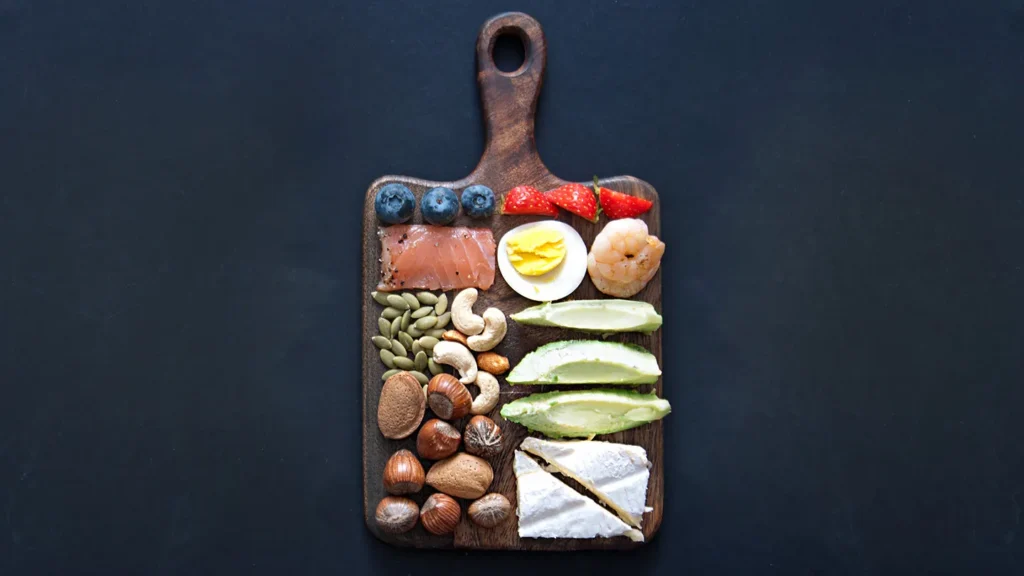
So, you’ve been doing the keto thing for a while now, and it’s actually working. That’s awesome! But the big question is, how do you keep this going without feeling like you’re on a hamster wheel? It’s not just about the initial weight loss or feeling better; it’s about making this way of eating stick. It can feel a bit daunting at first, thinking about the long haul, but honestly, it’s more about smart adjustments than strict rules forever.
Strategies For Long-Term Keto Success
Keeping keto going long-term is less about rigid adherence and more about finding a rhythm that works for you. Think of it as a marathon, not a sprint. You want to build habits that feel natural, not like a chore. This means being flexible and listening to your body.
- Focus on Whole Foods: Always try to base your meals around unprocessed foods. This means plenty of healthy fats, quality proteins, and lots of non-starchy vegetables. It’s the foundation that keeps you feeling good and getting the nutrients you need.
- Listen to Your Body: Pay attention to how different foods make you feel. Some days you might feel great with a bit more carbs, other days you might need to dial it back. Your energy levels, sleep, and digestion are good indicators.
- Plan for Social Situations: Eating out or attending events can be tricky. Having a few go-to keto-friendly options at restaurants or knowing how to politely decline certain foods makes a huge difference.
- Stay Hydrated: This is a simple one, but so important. Drinking enough water helps with everything from energy levels to digestion and can even help manage cravings.
Preventing Burnout On Keto
Burnout is real, especially with any diet that requires significant changes. If you start feeling restricted or bored, it’s a sign you need to switch things up. Maybe you’ve been eating the same few meals on repeat, or perhaps social events are becoming a source of stress. The key is to introduce variety and find ways to make keto enjoyable and sustainable.
Adapting Your Keto Plan Over Time
What worked for you in the first month might not be what works best after a year. Your body changes, your activity levels might change, and your goals might evolve. It’s okay to adjust your macro targets or explore different keto approaches. For example, some people find they can tolerate slightly more carbs as they become more fat-adapted.
Re-Evaluating Your Goals
Are you still on keto for the same reasons you started? Maybe your initial goal was weight loss, but now you’re focused on energy levels or managing a health condition. Regularly checking in with yourself about your ‘why’ can help you stay motivated and make necessary tweaks to your plan.
Incorporating Flexibility Into Keto
Strict keto isn’t the only way. Some people thrive on a more relaxed approach, like cyclical keto or targeted keto, where you might strategically add more carbs around workouts. Even just allowing for occasional treats without guilt can prevent feelings of deprivation. The goal is a sustainable lifestyle, not a temporary fix.
Dealing With Plateaus
It’s common to hit a plateau where progress seems to stall. Instead of getting discouraged, view it as an opportunity to reassess. Are you tracking your intake accurately? Has your activity level changed? Sometimes a small adjustment, like increasing your healthy fat intake or adding a bit more movement, can help you break through.
The Importance Of Consistency
While flexibility is key, consistency is what drives results. This doesn’t mean being perfect every single day. It means showing up most of the time, making keto-friendly choices more often than not, and not letting one off-plan meal derail your entire week. Small, consistent efforts add up.
Making Keto A Sustainable Habit
Ultimately, the best way to maintain a ketogenic lifestyle long-term is to make it a habit that fits into your life. This involves finding recipes you love, building a supportive community (online or in person), and remembering that it’s okay to have off days. Keto should support your life, not complicate it.
Wrapping Up Your Keto Journey
So, you’ve made it through the weekly menu, the shopping lists, and hopefully, you’ve picked up a few handy tips along the way. Starting something new like the ketogenic diet can feel like a lot, but remember, it’s all about taking it one meal at a time. This plan is designed to make things simpler, taking the guesswork out of what to eat so you can focus on how you feel. Don’t get discouraged if things aren’t perfect right away; consistency is key. Keep experimenting with the recipes, listen to your body, and celebrate the small wins. You’ve got this!
Frequently Asked Questions
What exactly is the keto diet?
The keto diet is a way of eating that’s very low in carbs and high in fat. When you eat this way, your body starts using fat for energy instead of sugar, a process called ketosis. This can help with losing weight and other health benefits.
Who should consider going keto?
This diet can be good for people who want to lose weight, feel more in control of their appetite, or manage their blood sugar better. It’s a way to simplify eating while getting health perks.
What are the main rules for eating keto?
The main rule is to keep your daily net carbs very low, usually under 20 grams. You also need to eat enough protein to feel full and get the energy you need.
What does ‘net carbs’ mean?
Net carbs are the total carbs in a food minus the fiber. Fiber is a type of carb that your body doesn’t digest, so it doesn’t affect your blood sugar much. Counting net carbs helps you stay within your daily limit.
What are some foods I can eat on keto?
You can enjoy plenty of tasty foods like meats, poultry, fish, eggs, non-starchy vegetables (like spinach and broccoli), healthy fats (like olive oil and butter), and some dairy products like cheese.
What foods should I stay away from on keto?
You’ll need to avoid sugary foods like candy and cake, starchy foods like bread, pasta, rice, and potatoes, and sugary drinks like soda and juice.
Is it okay to drink alcohol on keto?
Yes, you can drink alcohol, but you need to choose drinks that are low in carbs. Think dry wines or sugar-free mixed drinks. Avoid sugary cocktails and beers.
Can I eat fruit on the keto diet?
You can eat some fruits, but you have to be careful. Stick to low-sugar fruits like berries (strawberries, raspberries, blackberries) and eat them in small portions.
What is the ‘keto flu’ and how do I avoid it?
The keto flu is a set of symptoms like headaches or tiredness that can happen when your body first adjusts to keto. Drinking plenty of water and making sure you get enough salt can help lessen these symptoms.
How can I make keto easier and save time?
You can save time by prepping meals ahead of time, cooking extra portions for leftovers, and keeping simple, no-cook snacks on hand like cheese or hard-boiled eggs.
Do I need to count calories on keto?
While focusing on carbs is key, some people also track calories to help with weight loss. However, the keto diet often helps reduce hunger, so strict calorie counting might not always be necessary.
Can I do keto if I’m a vegetarian?
Yes, it’s possible to follow a vegetarian keto diet, especially if you eat eggs and dairy. A vegan keto diet is more challenging but can be done by focusing on plant-based fats and proteins.

Hey there 👋 I’m Danilo — a food enthusiast passionate about low carb cooking and healthy living.
I believe that eating well doesn’t have to be complicated — it just needs flavor, love, and real ingredients. 🍳
Here, I share easy, low carb recipes made for real life — simple, satisfying, and full of taste. Let’s make healthy food something you actually crave!
